
1.) An AquaDam cofferdam system was needed for a PG&E project at Upper Blue Lake in Markleeville California.
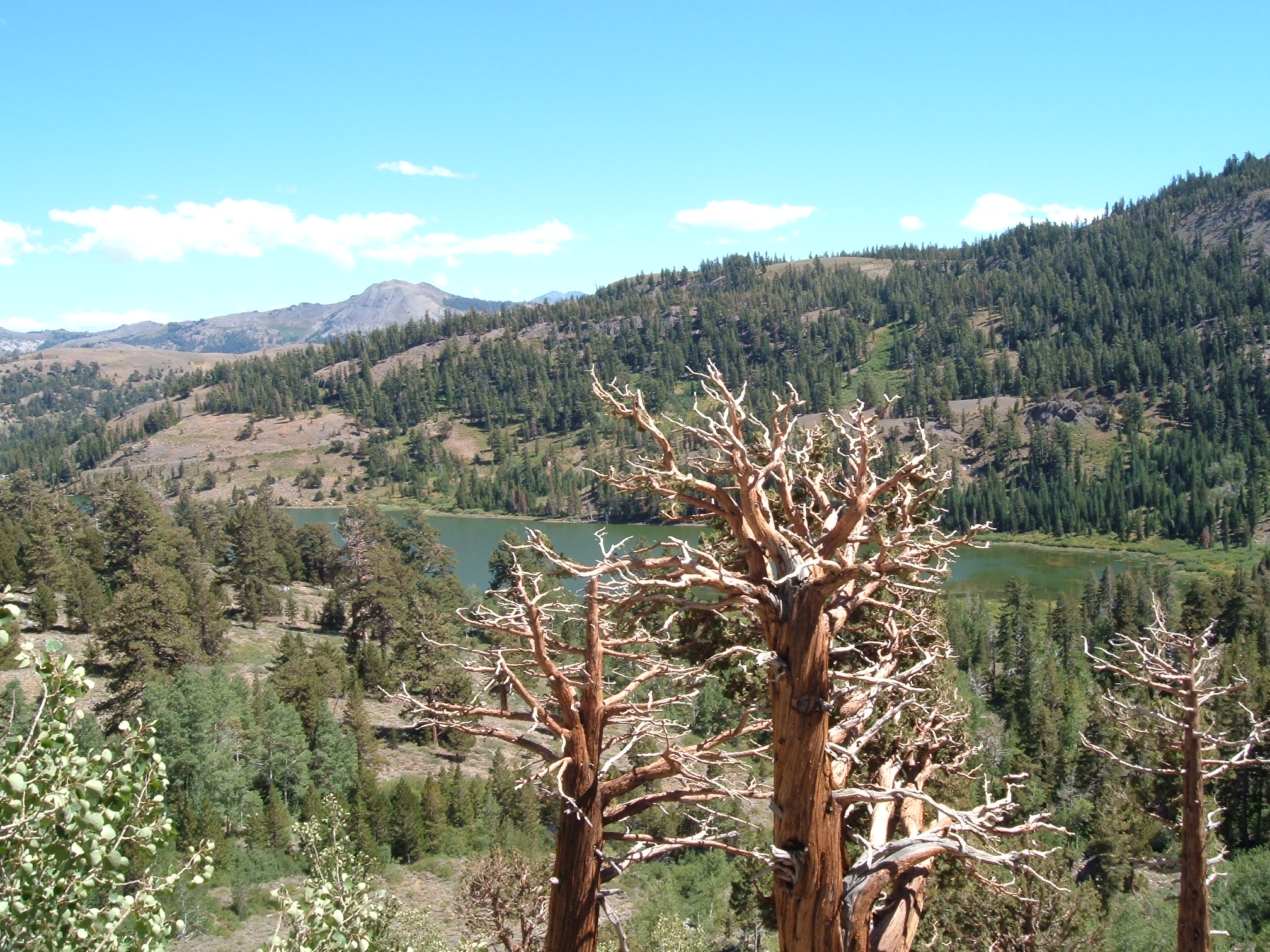
2.) A view of the lake from a high point.
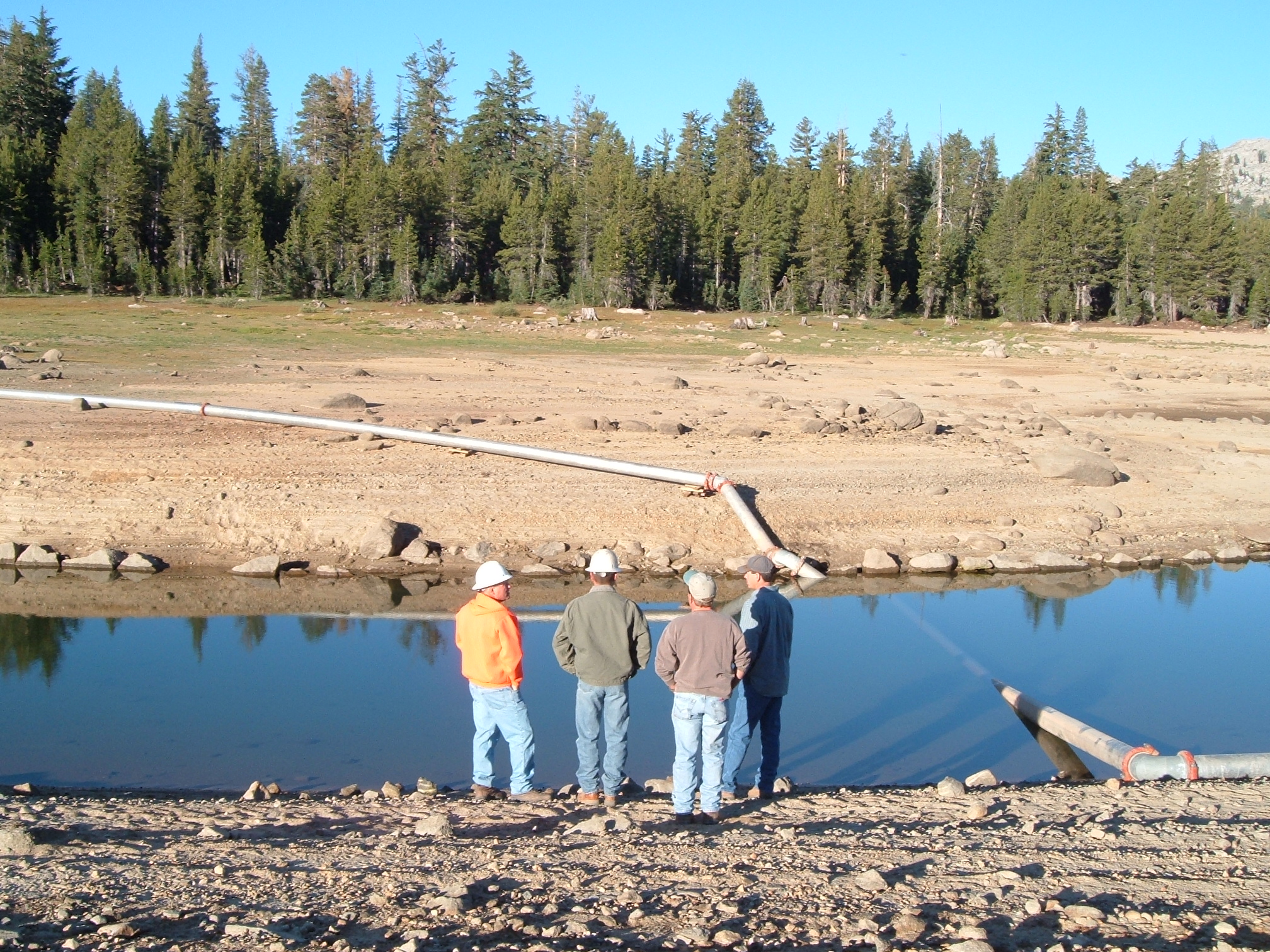
3.) The location of where the first single closed end (SCE) AquaDam will go. Workers discuss a plan for installing the first SCE AquaDam.
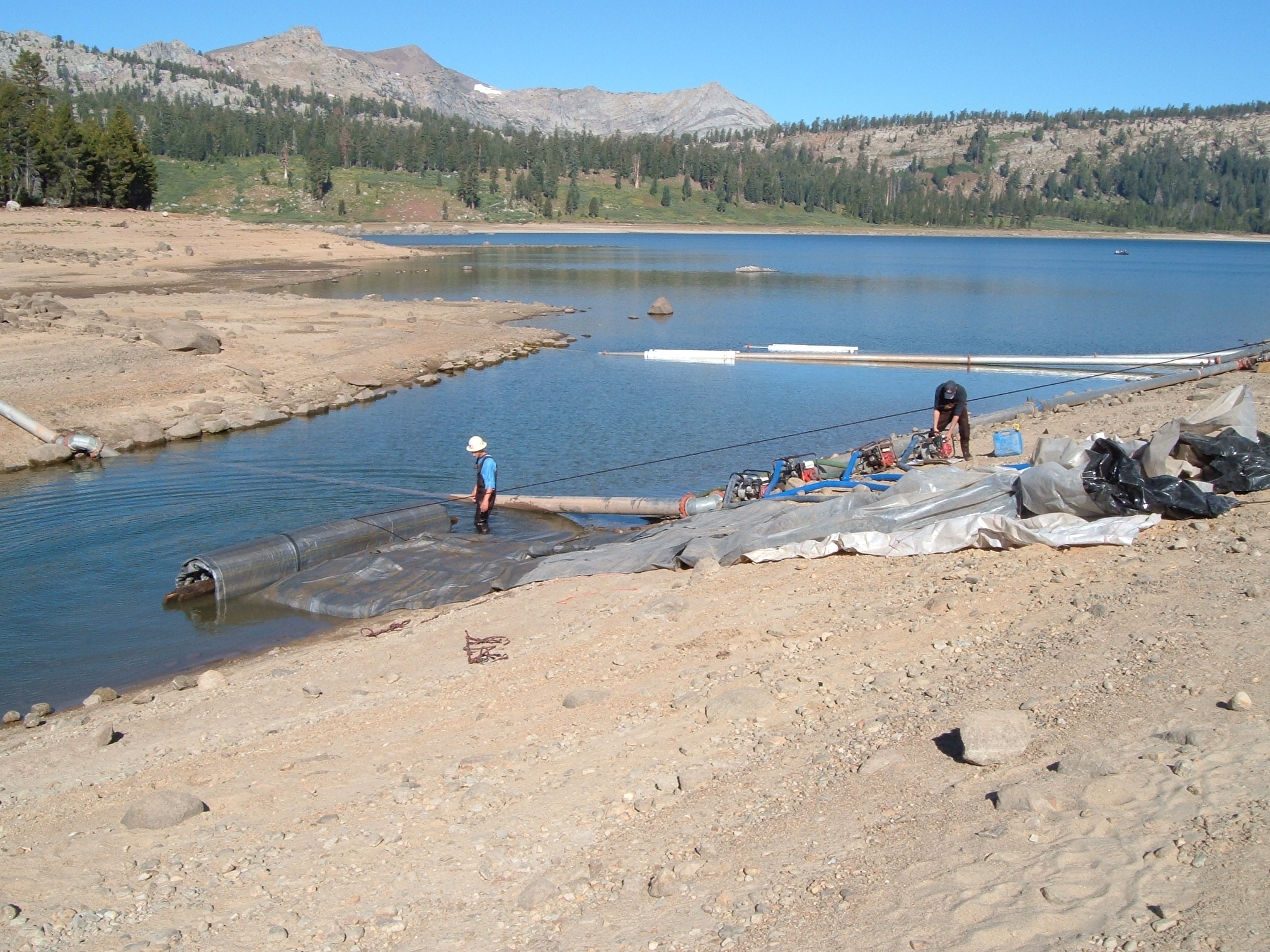
4.) The first SCE AquaDam has been launched from its starting bank. The starting bank needs to be elevated higher than the body of the installed AquaDam along its given path. The starting point (open end) and fill-tubes of a SCE AquaDam must be elevated higher than the full height of dam along its given path. An AquaDam will only reach its full height at the lowest elevation along its given path.
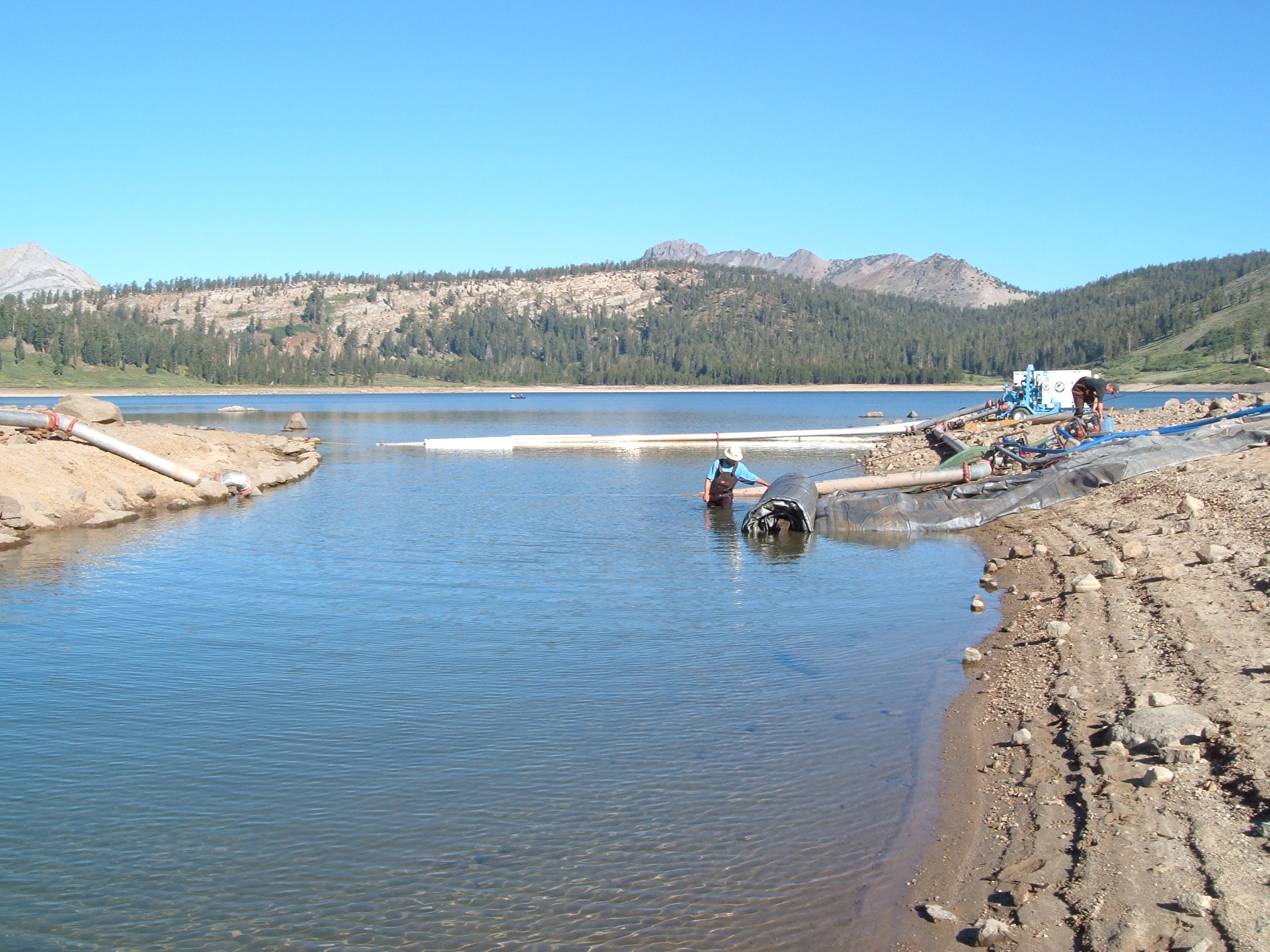
5.) Looking towards Upper Blue Lake at the first SCE AquaDam as it is being filled with water. A rope has been laid under and over the AquaDam to maintain control of the unit as it is filled with water and crosses the channel. The rope keeps the roll from unrolling while the unrolled portion of the AquaDam fills and builds head. After the AquaDam has enough head above the surrounding water, workers will release a few feet of rope to allow the roll to unroll a few feet.
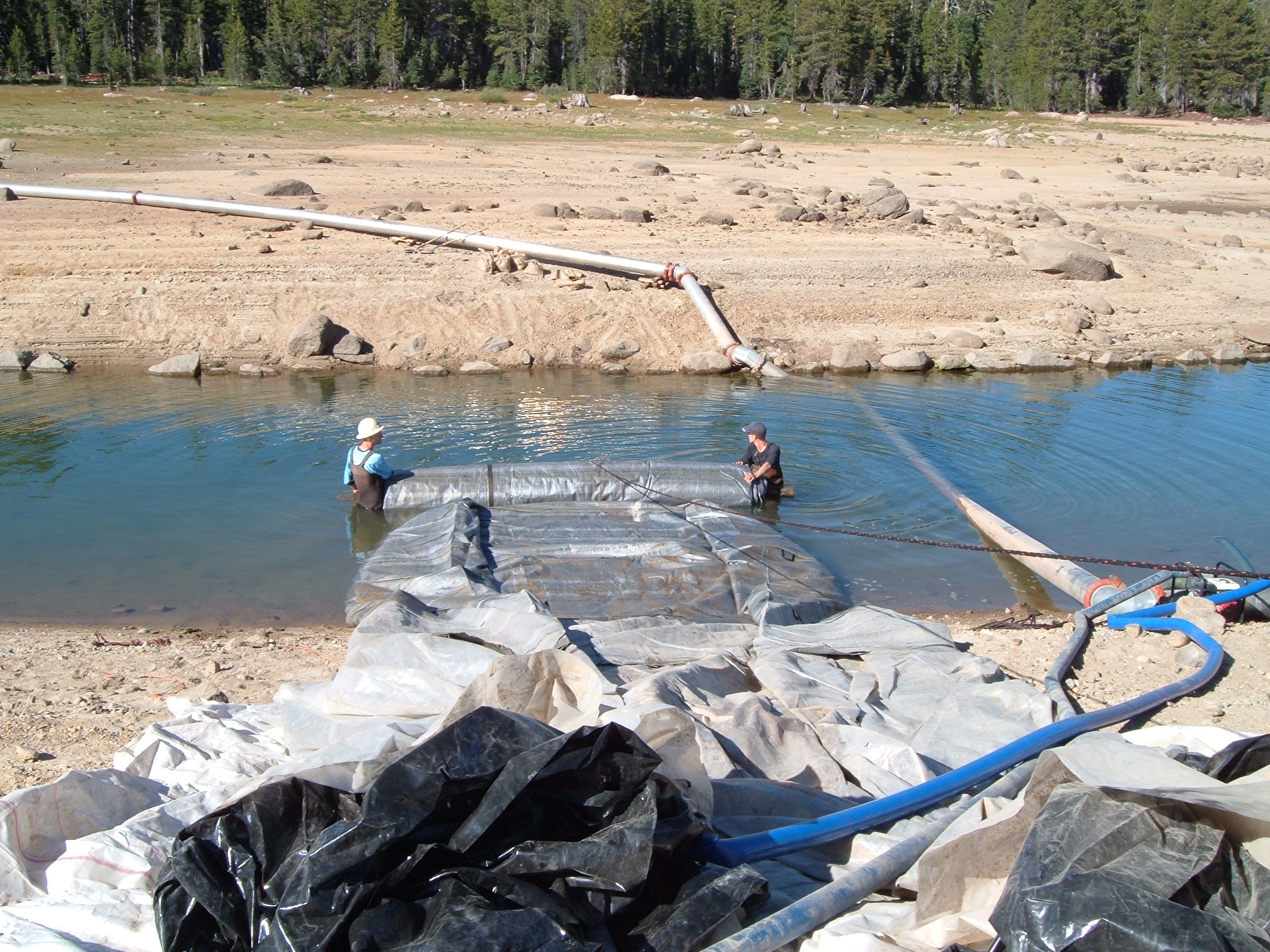
6.) The first AquaDam continues to be filled, as workers monitor the roll end and the head that the unrolled length has.
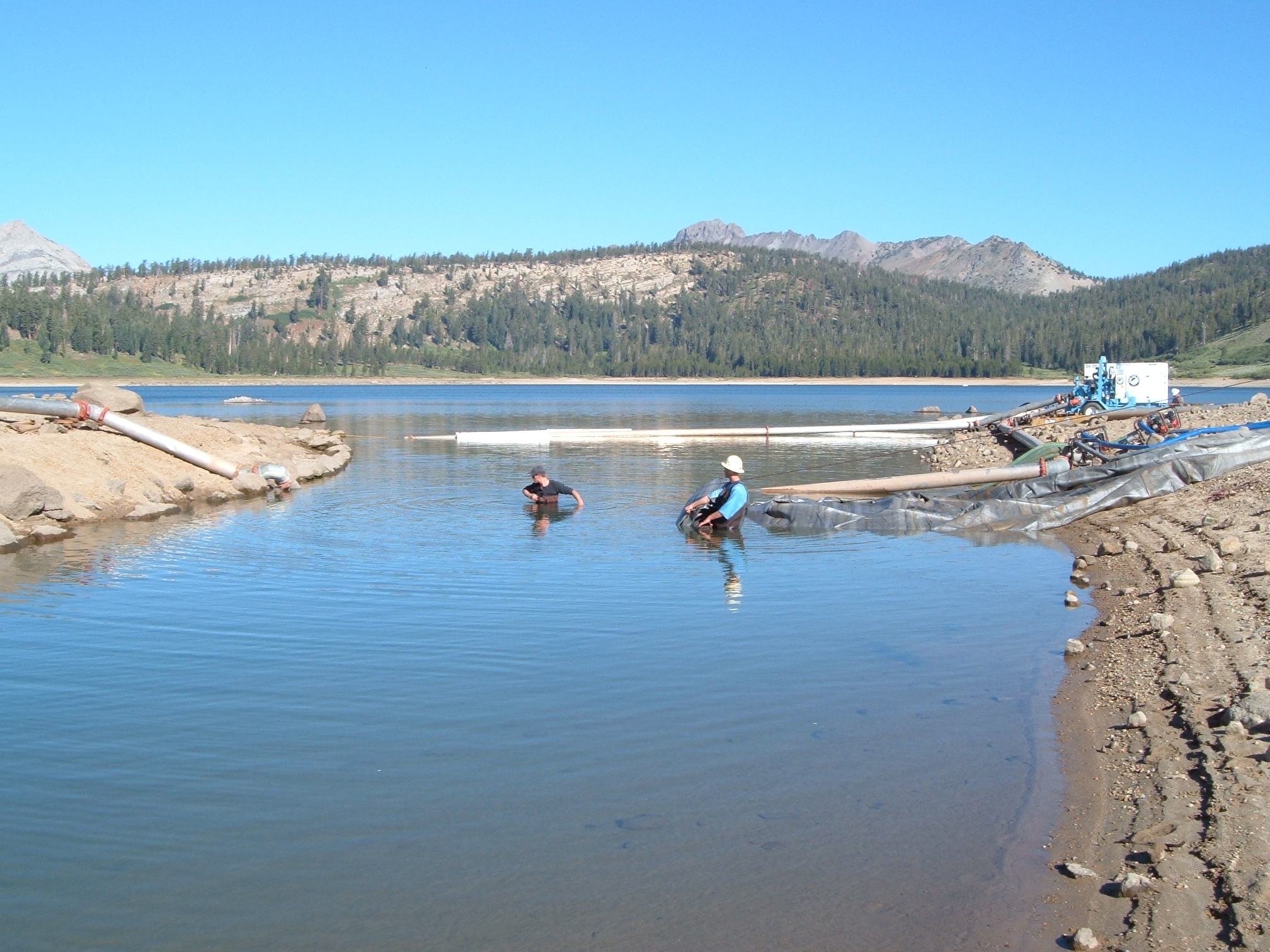
7.) While the AquaDam was filling a worker noticed some rocks that may cause issues with the AquaDam sealing properly to the bed of the channel and ending bank.
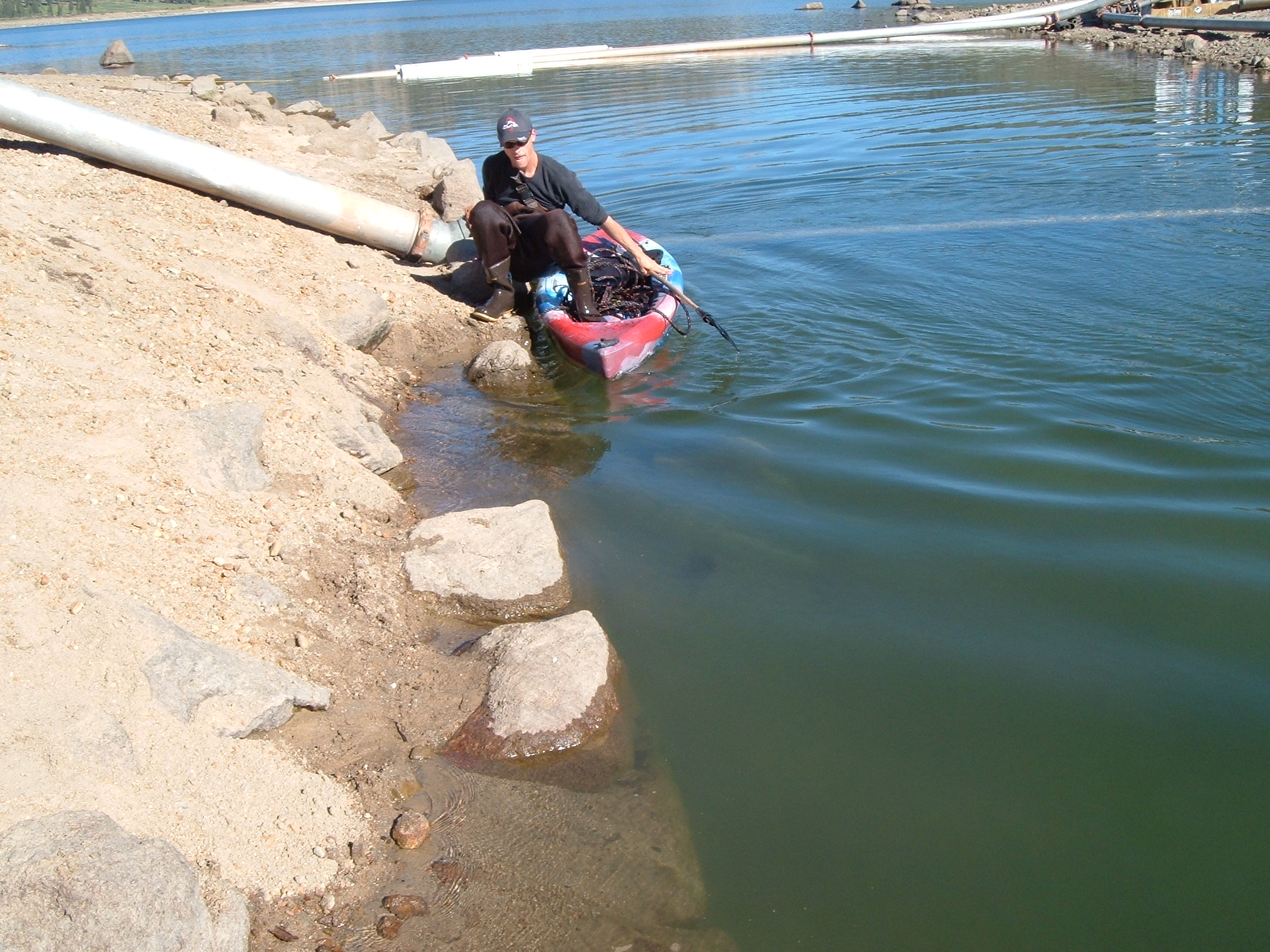
8.) A worker gathers supplies at the ending bank to help prepare the area for the approaching AquaDam.
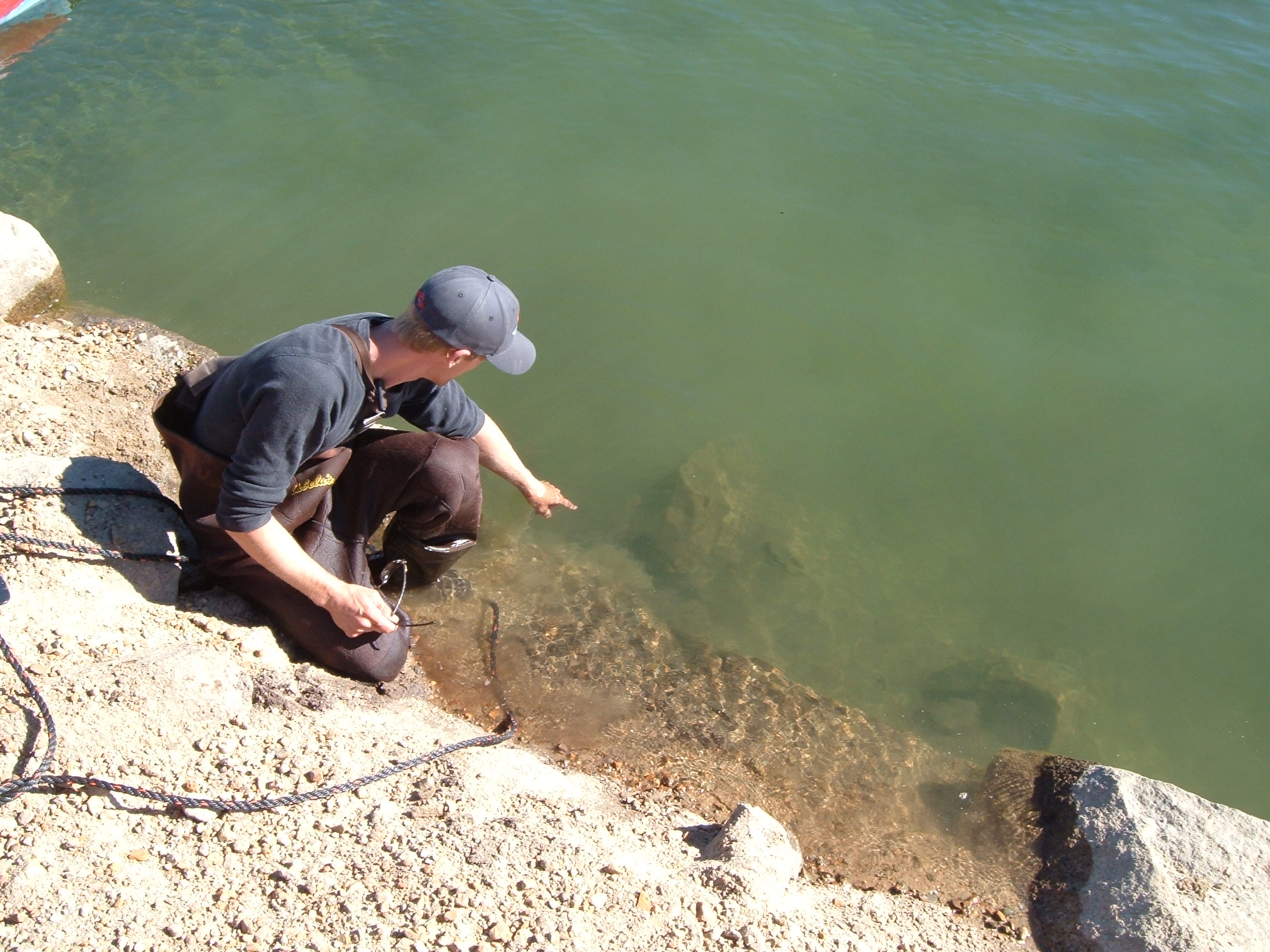
9.) A worker is pointing out large sharp rocks that would likely cause problems.
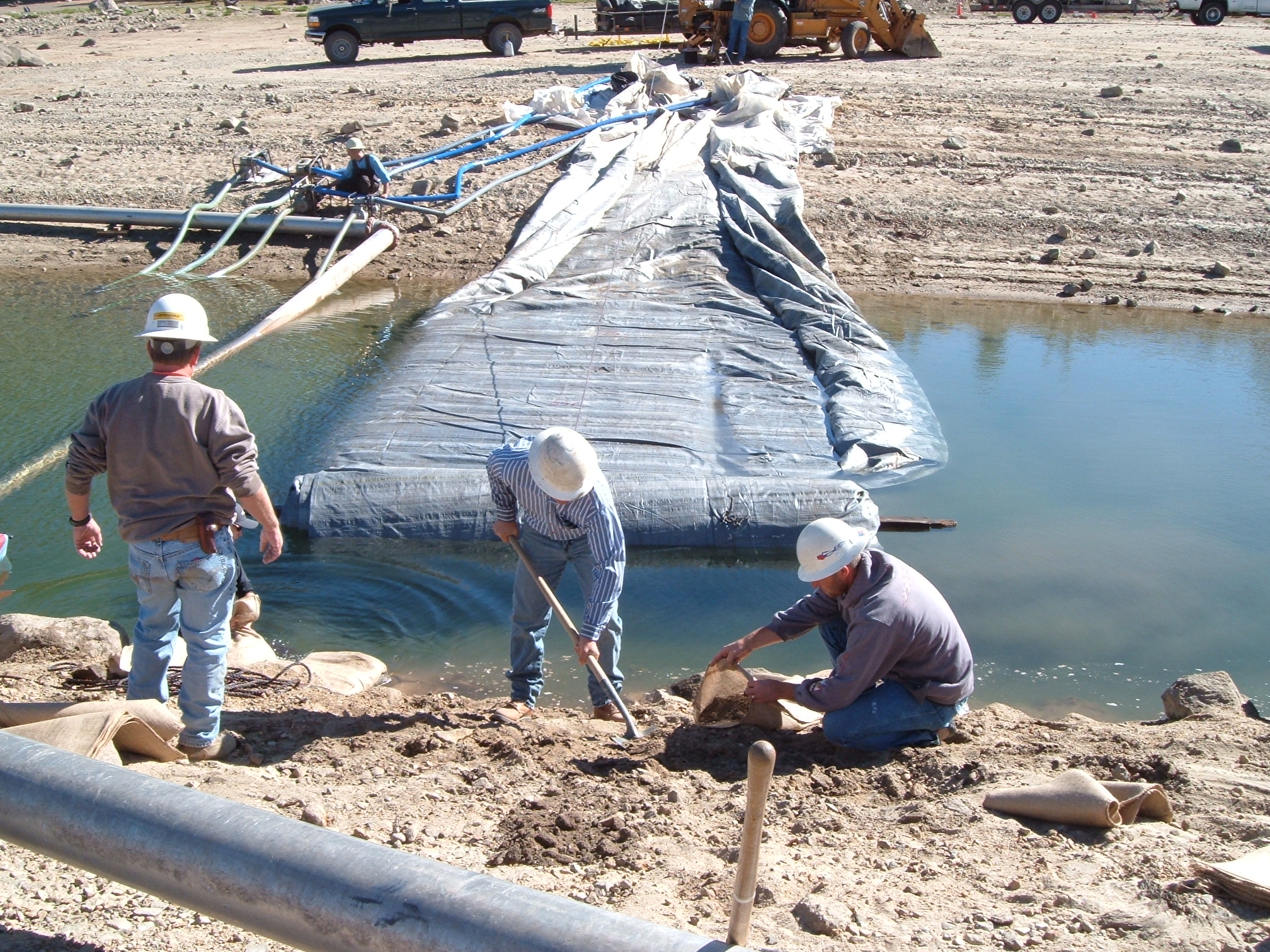
10.) Worker decided to place sandbags around the sharp rocks to prevent them from damaging the AquaDam. The sandbags should only be filled about one-third full, so that they will stack better.
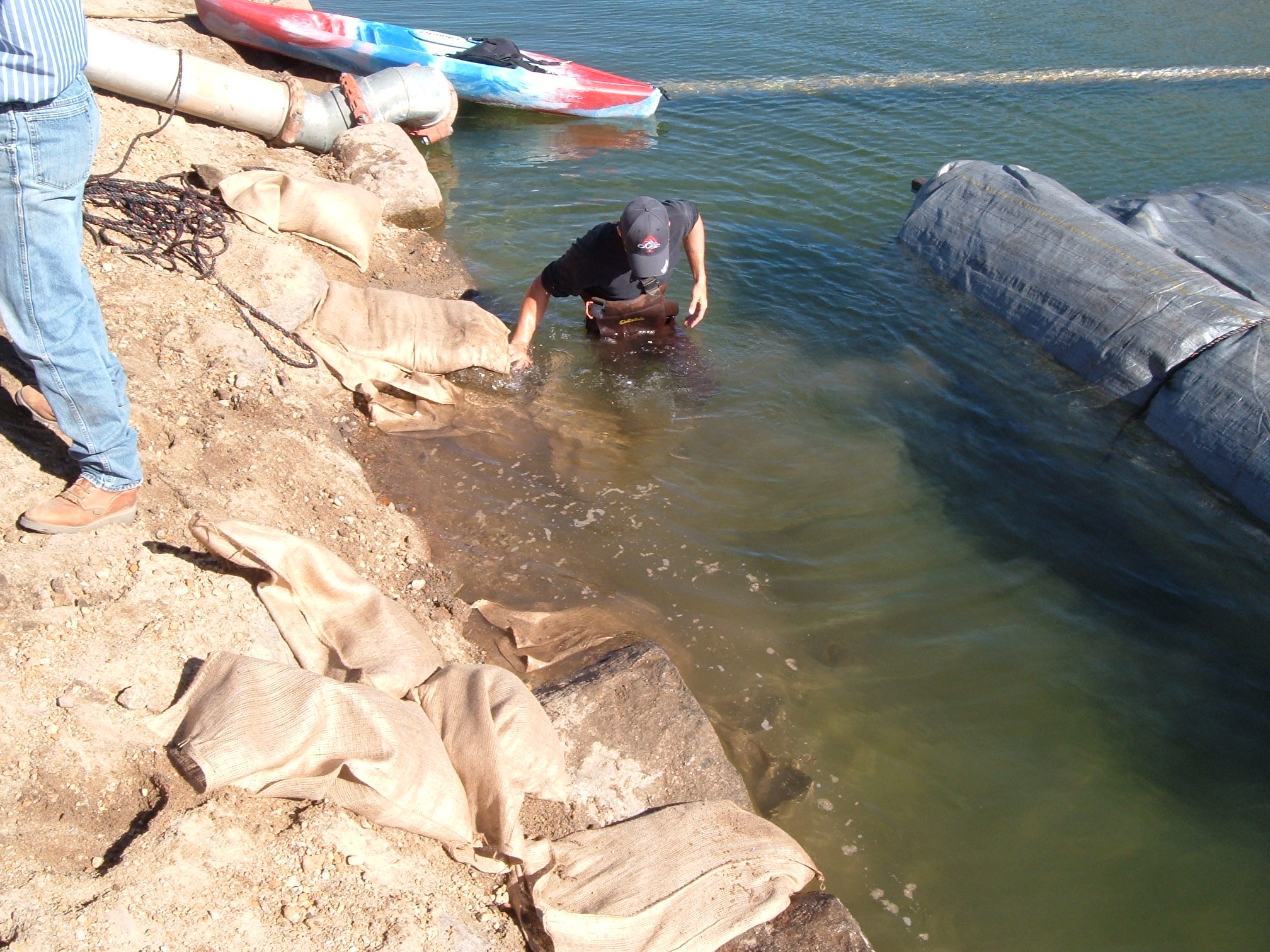
11.) Workers place the sandbags around the sharp rocks and edges.
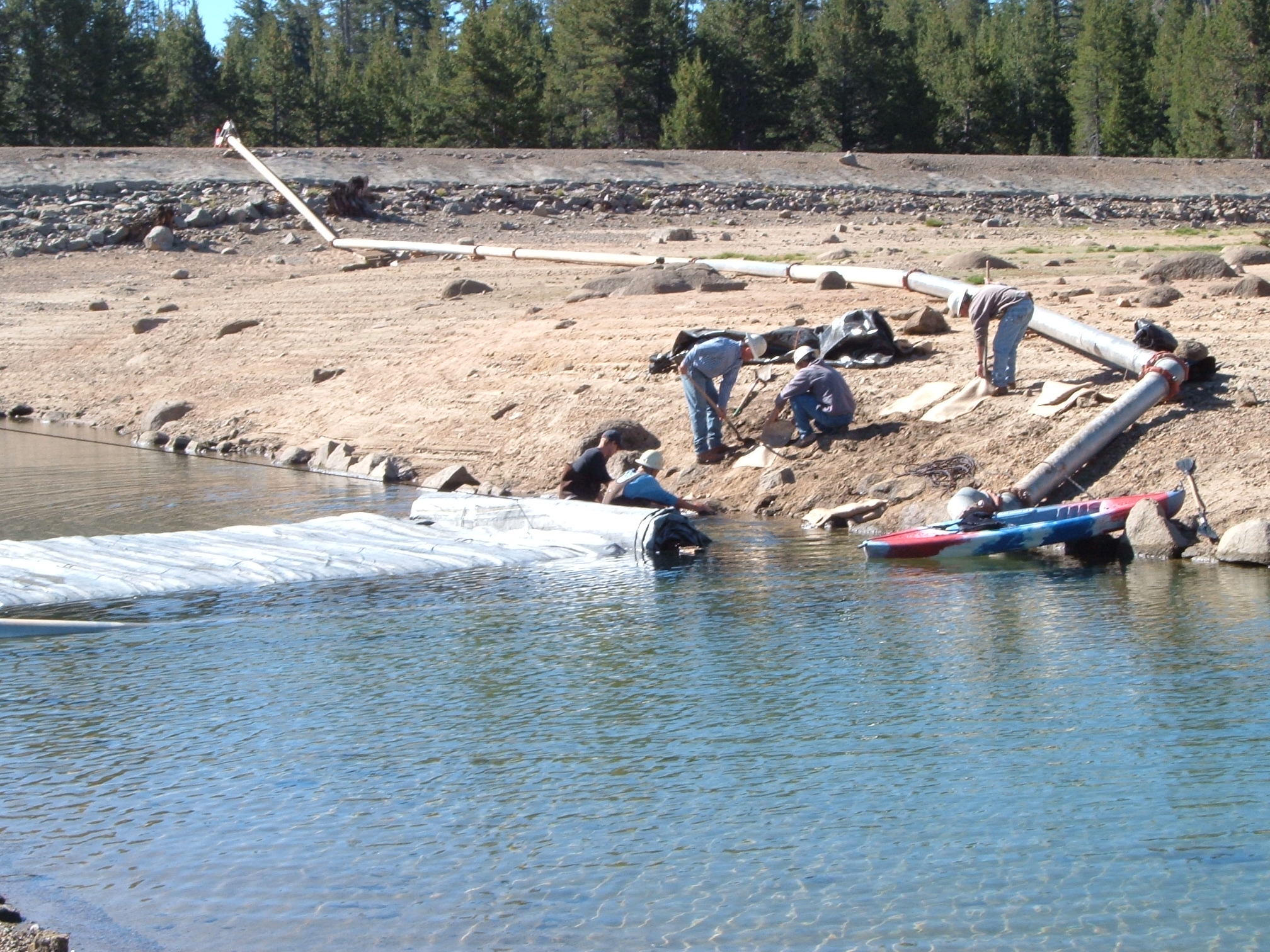
12.) The AquaDam continues to fill while the workers continue to prepare the ending bank and fill sandbags.
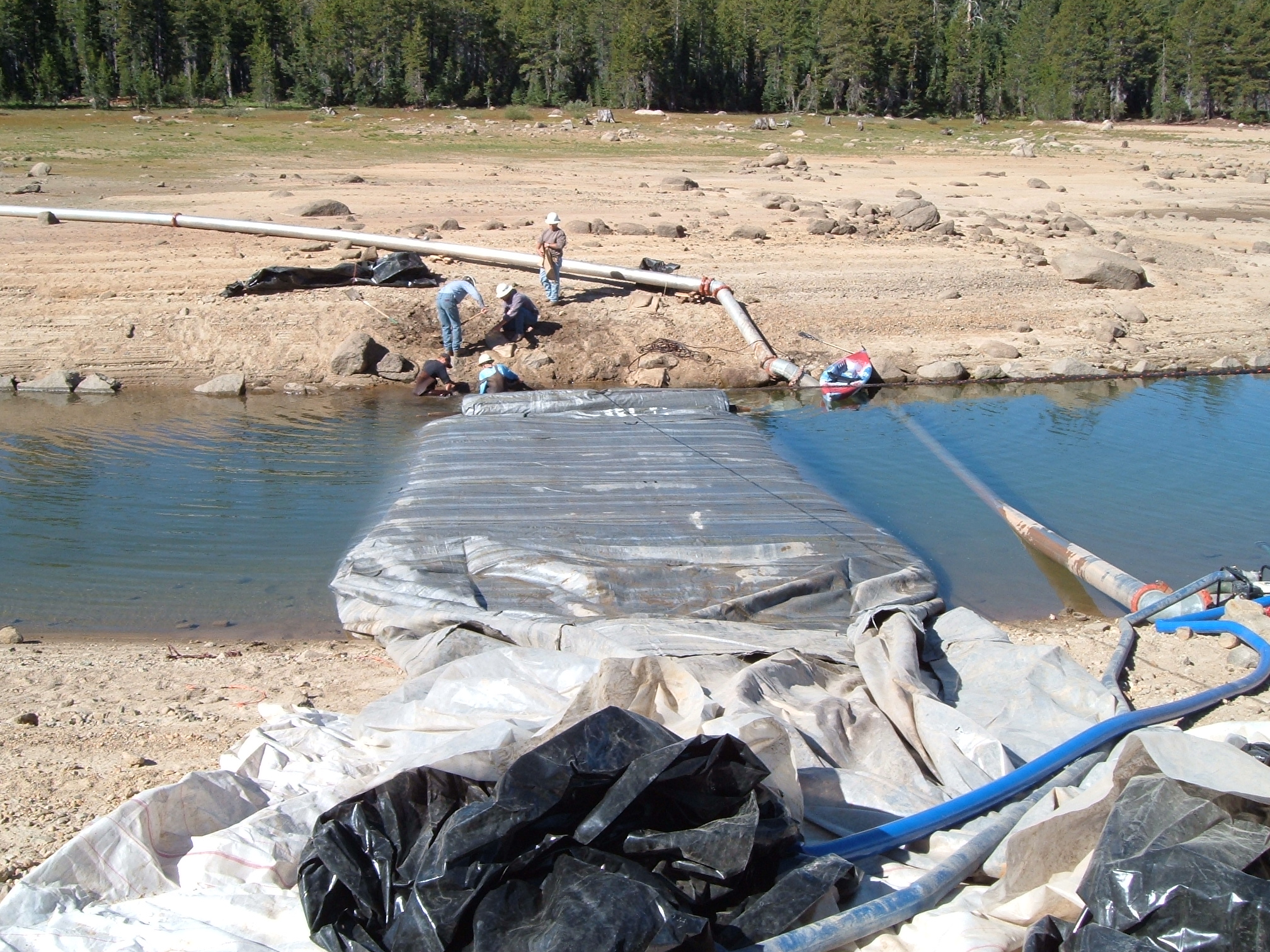
13.) The first SCE AquaDam continues to fill.
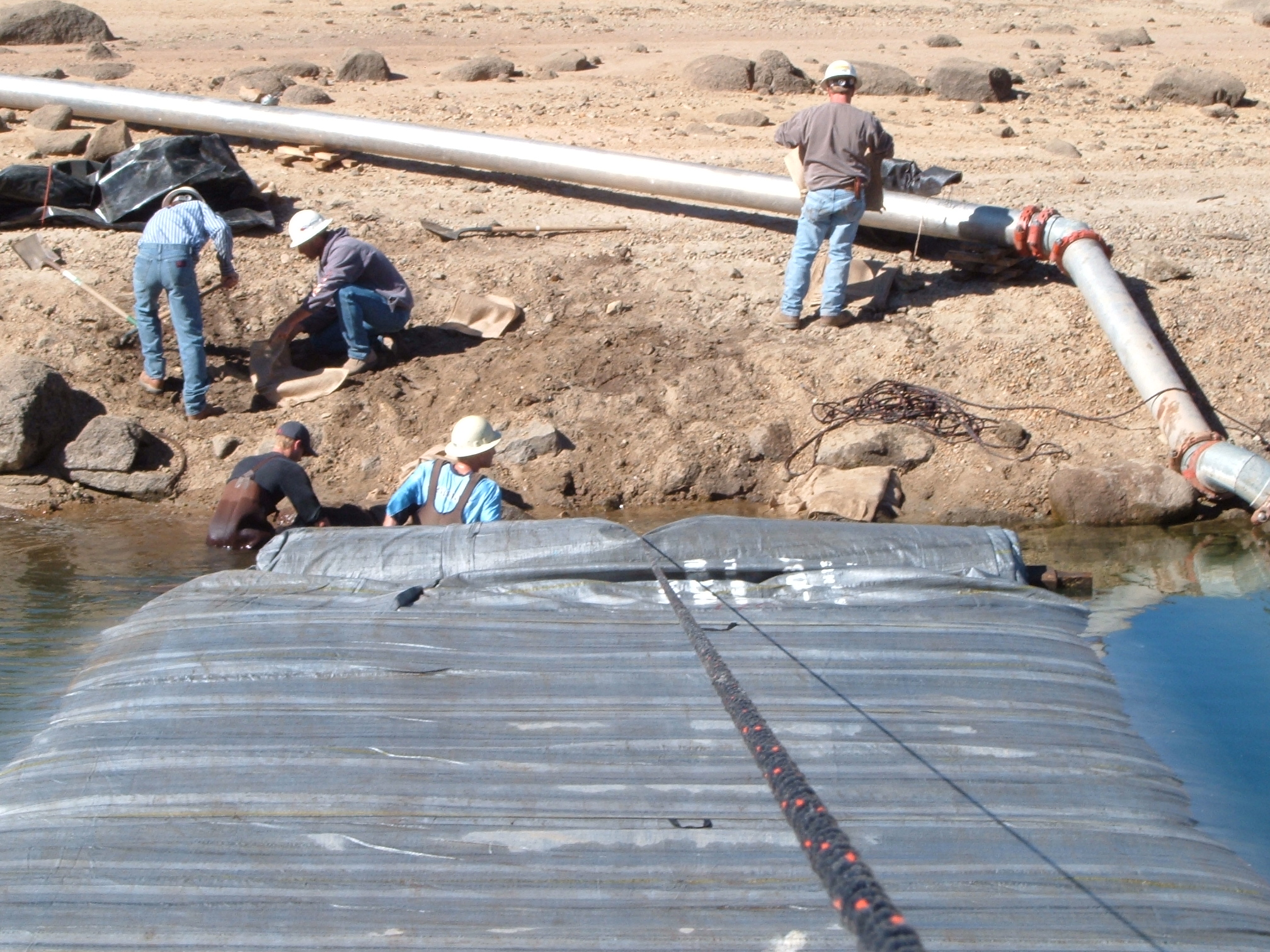
14.) The AquaDam has a few inches of head and is almost ready to meet up with the ending bank.

15.) A worker points out a hole between some of the rocks that may aid to seepage.
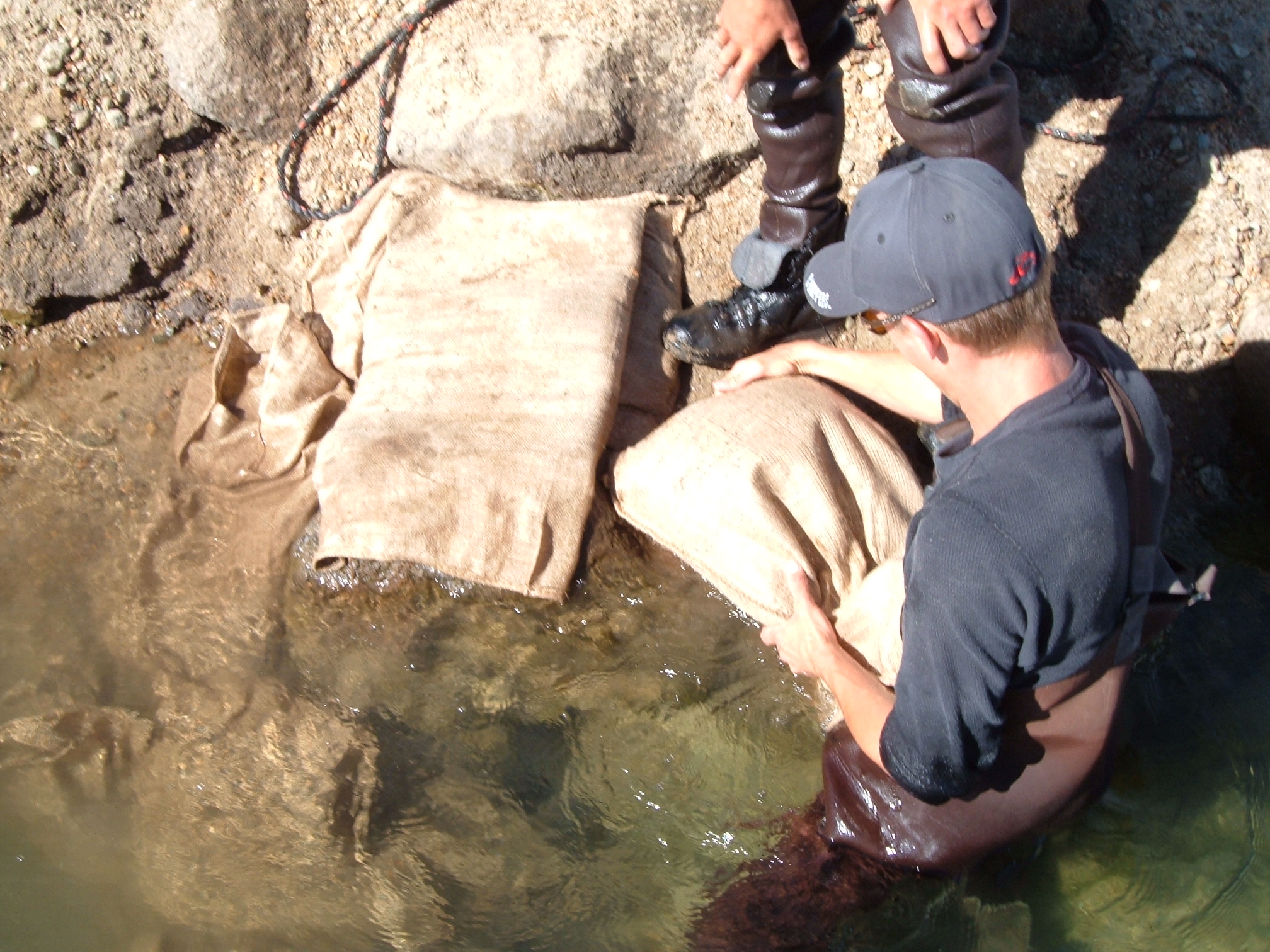
16.) The worker decided to place more sandbags into the holes.

17.) Back at the starting bank, workers hold the rope that is preventing the roll from unrolling as the AquaDam builds head above the surrounding water and sandbags are stuffed around the rocks at the ending bank.
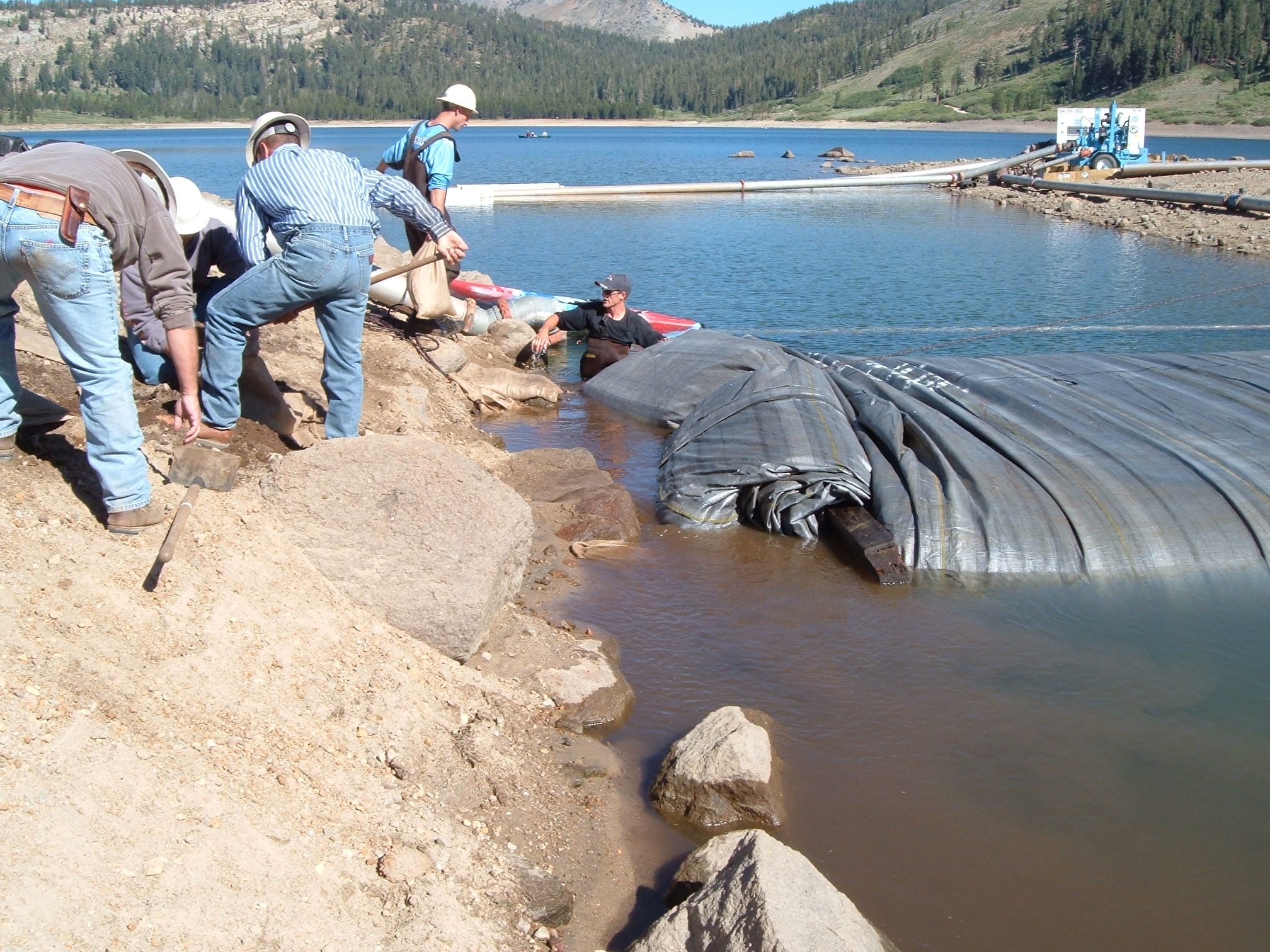
18.) The material on the roll is bending from the rope and pressure of the water inside the AquaDam.
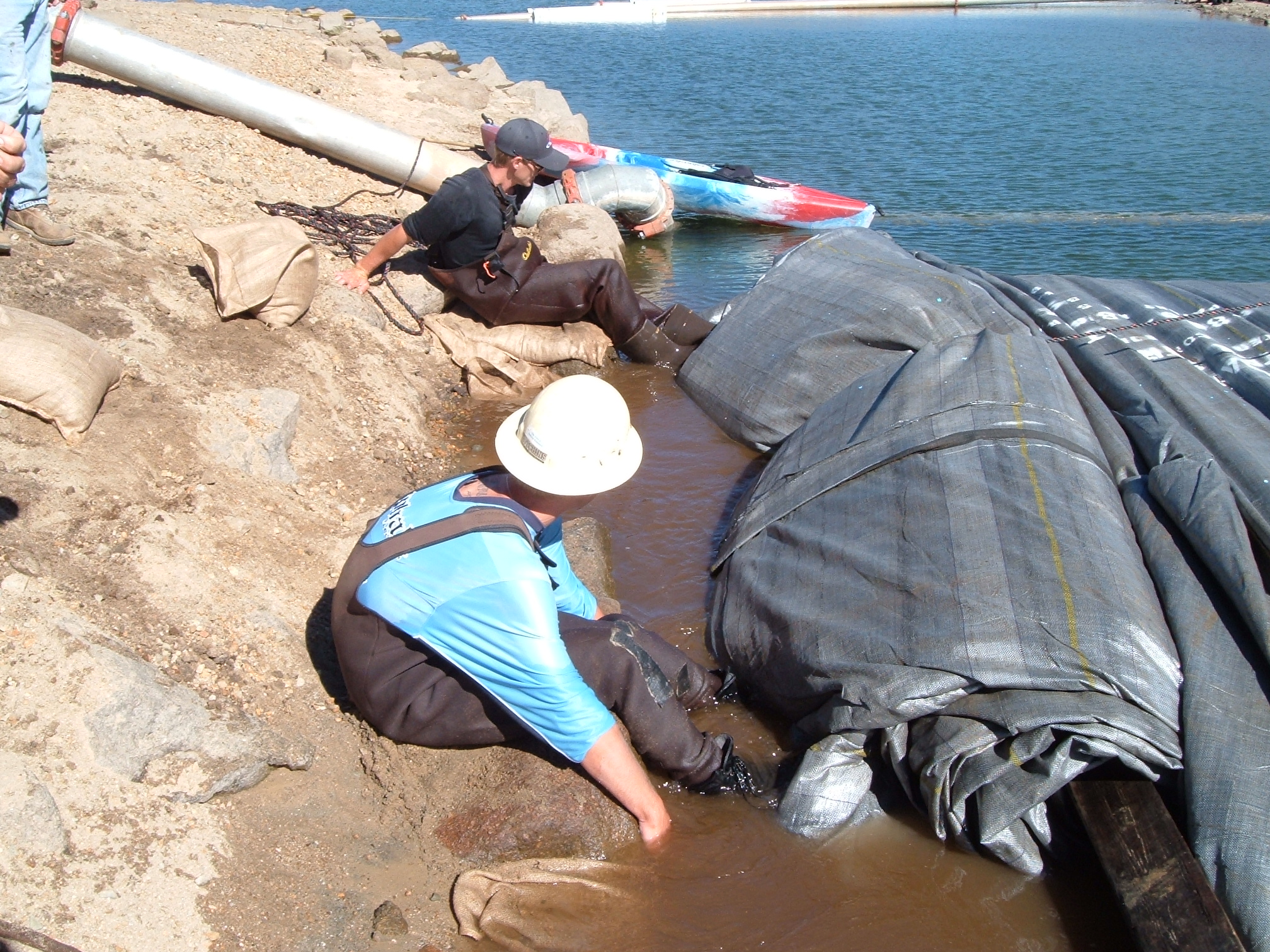
19.) Workers use their feet to push and hold the material as the AquaDam fills at the ending bank.
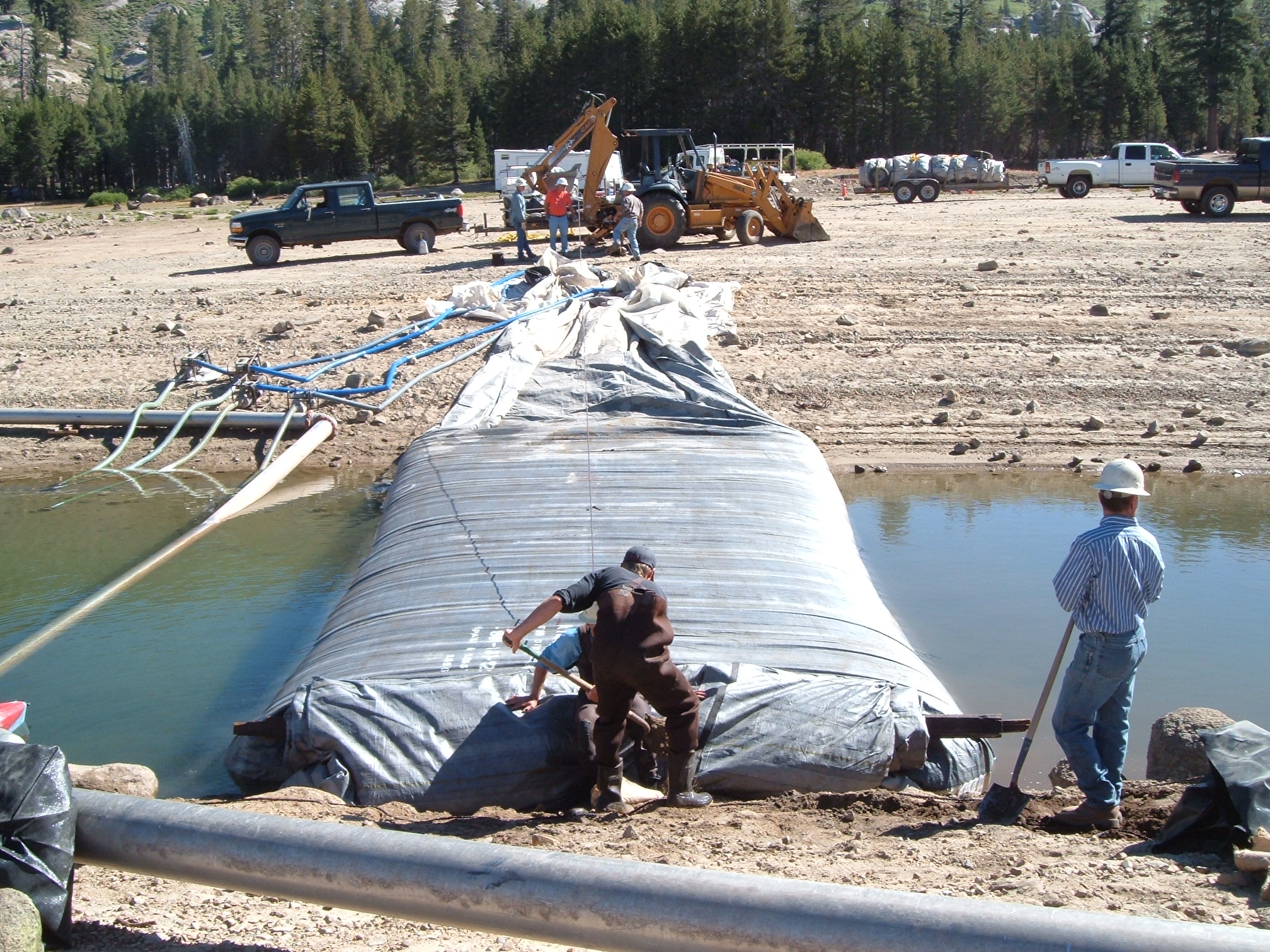
20.) The AquaDam has reached the ending bank but will need to continue to fill.
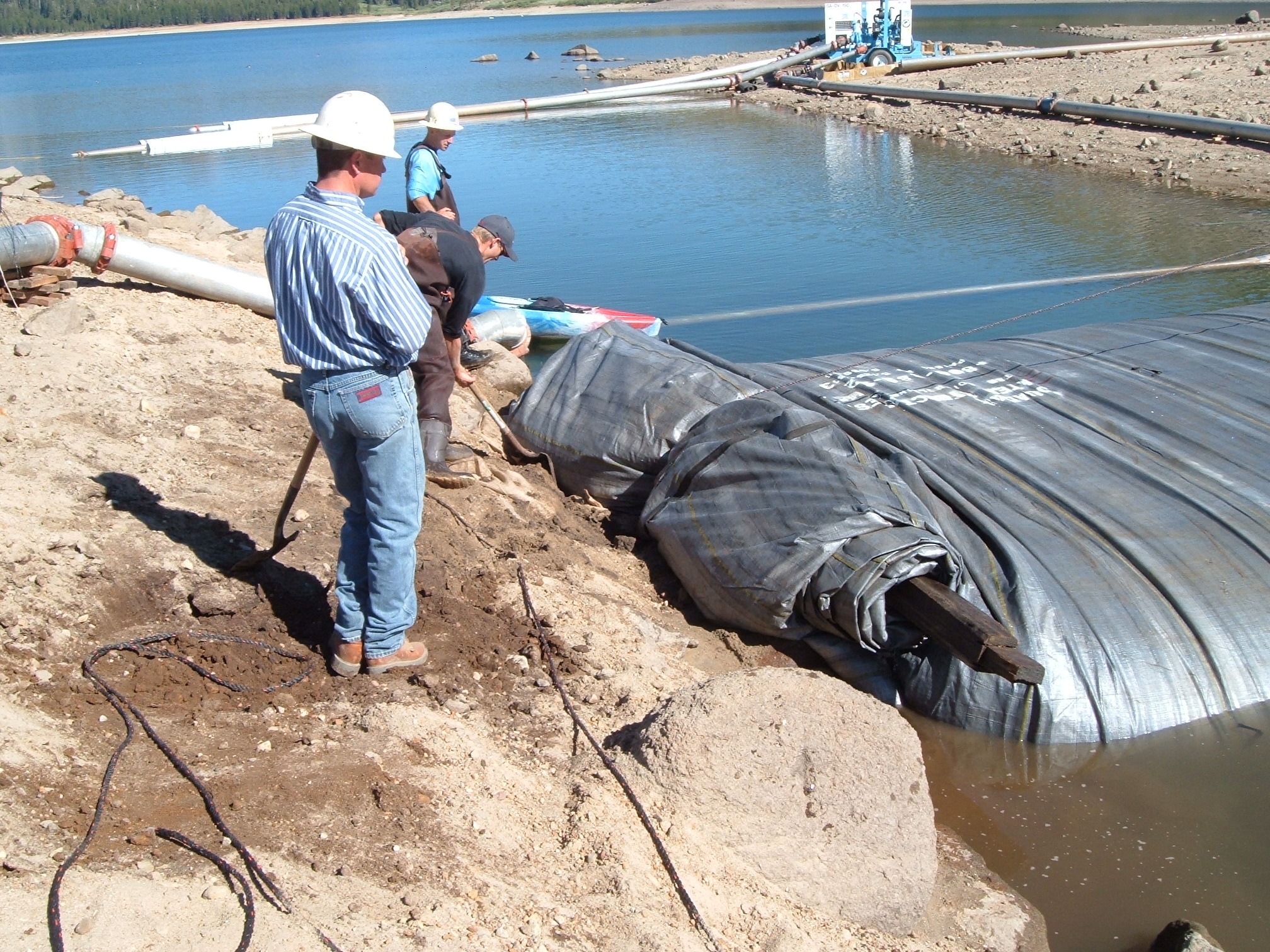
21.) Workers continue to add dirt and sandbags to the sharp rocks at the ending bank as the AquaDam finishes filling.
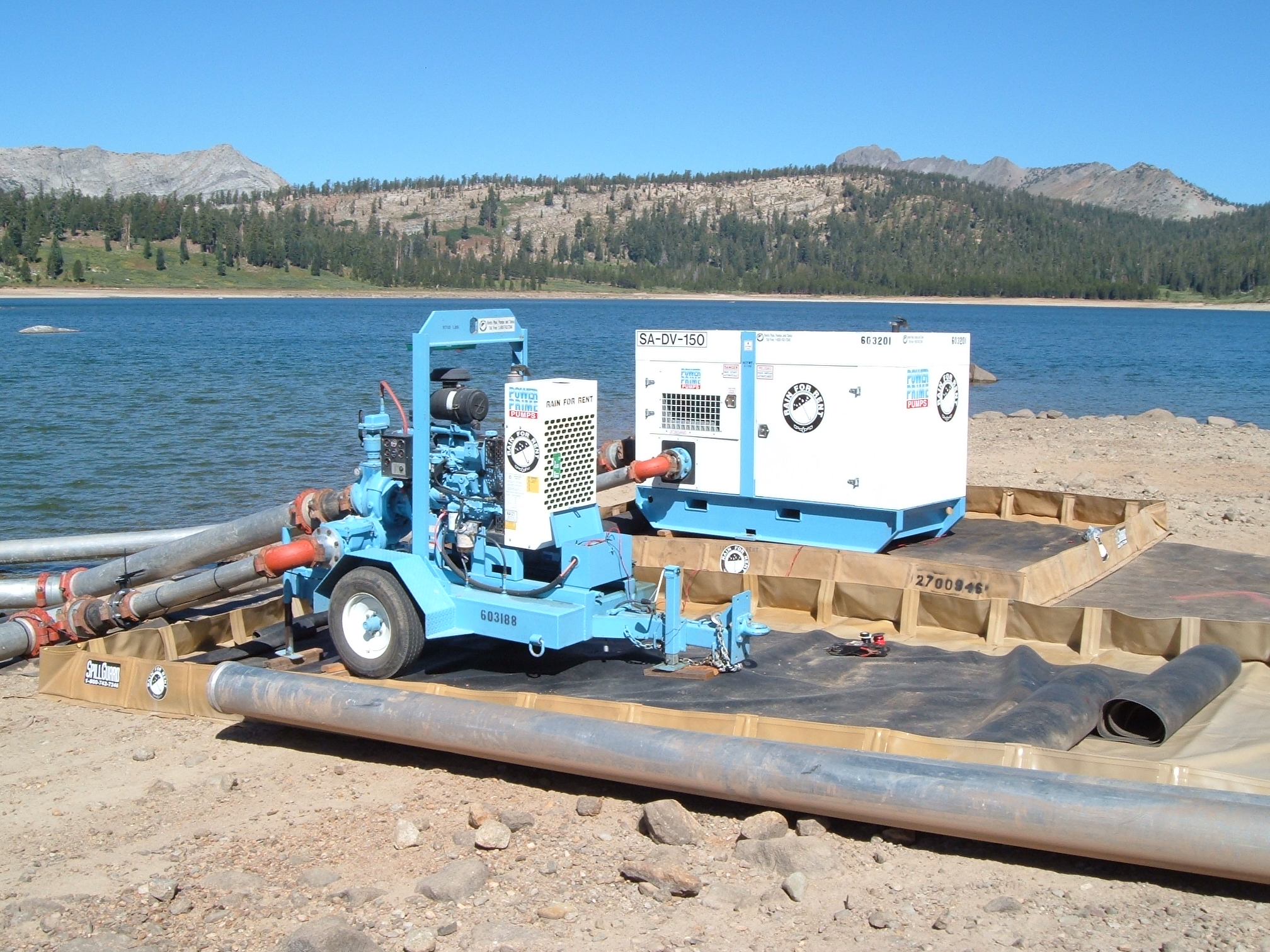
22.) The pumping system used for the pump around diversion at this project.
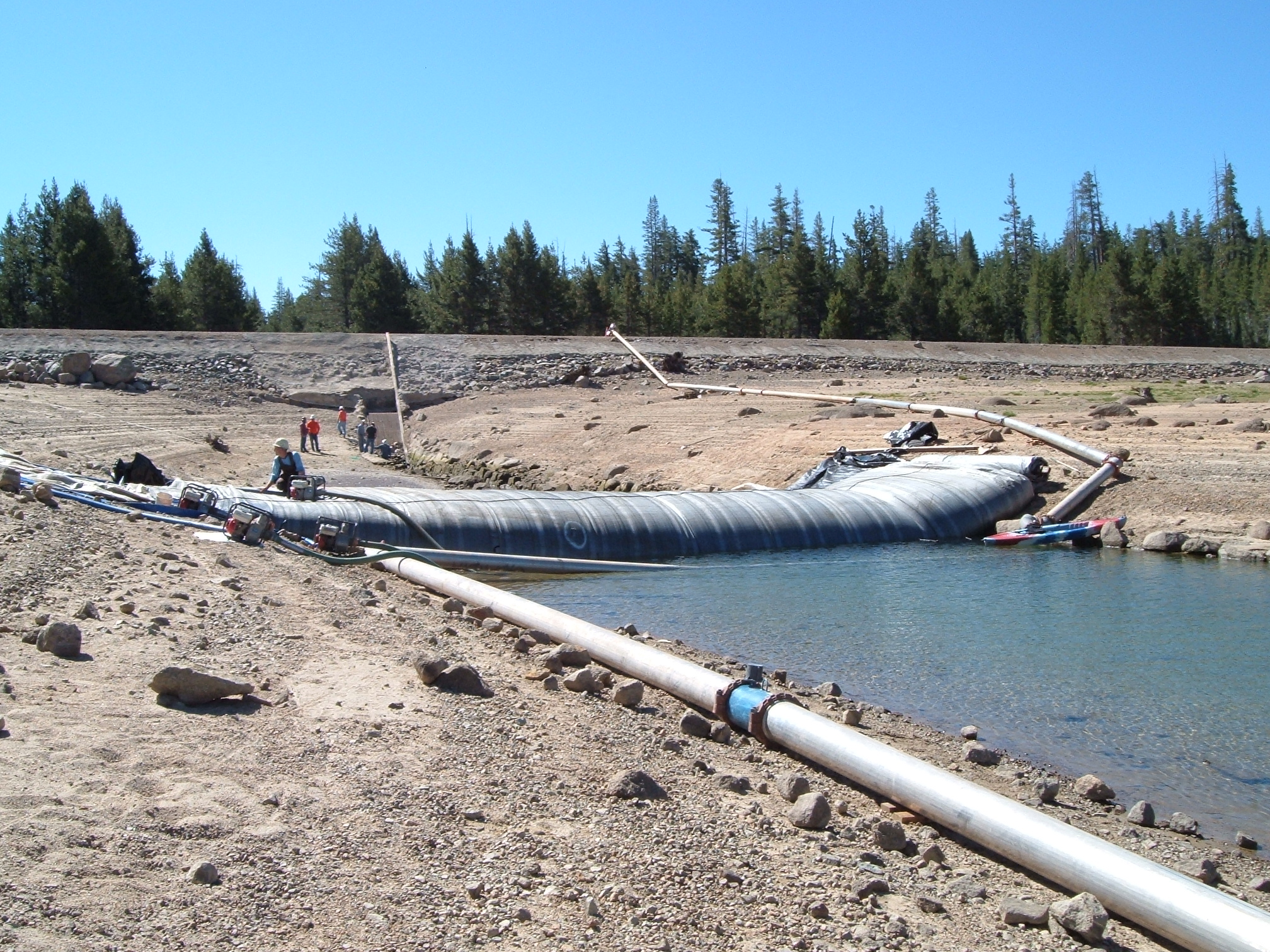
23.) Looking downstream at the AquaDam, the lake’s dam and gate that need repairs.
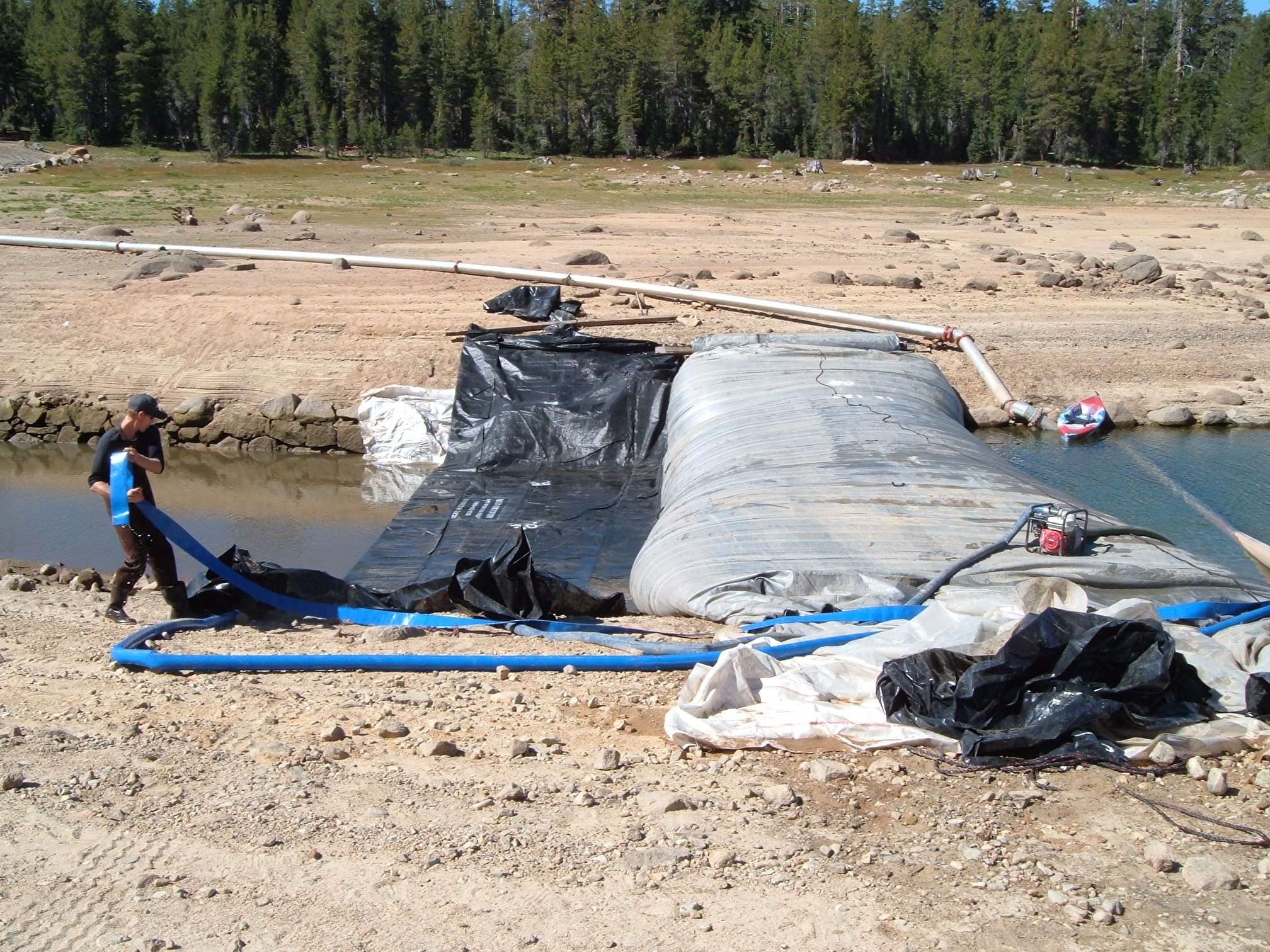
24.) A second AquaDam has been laid out and workers have begun filling it with water.
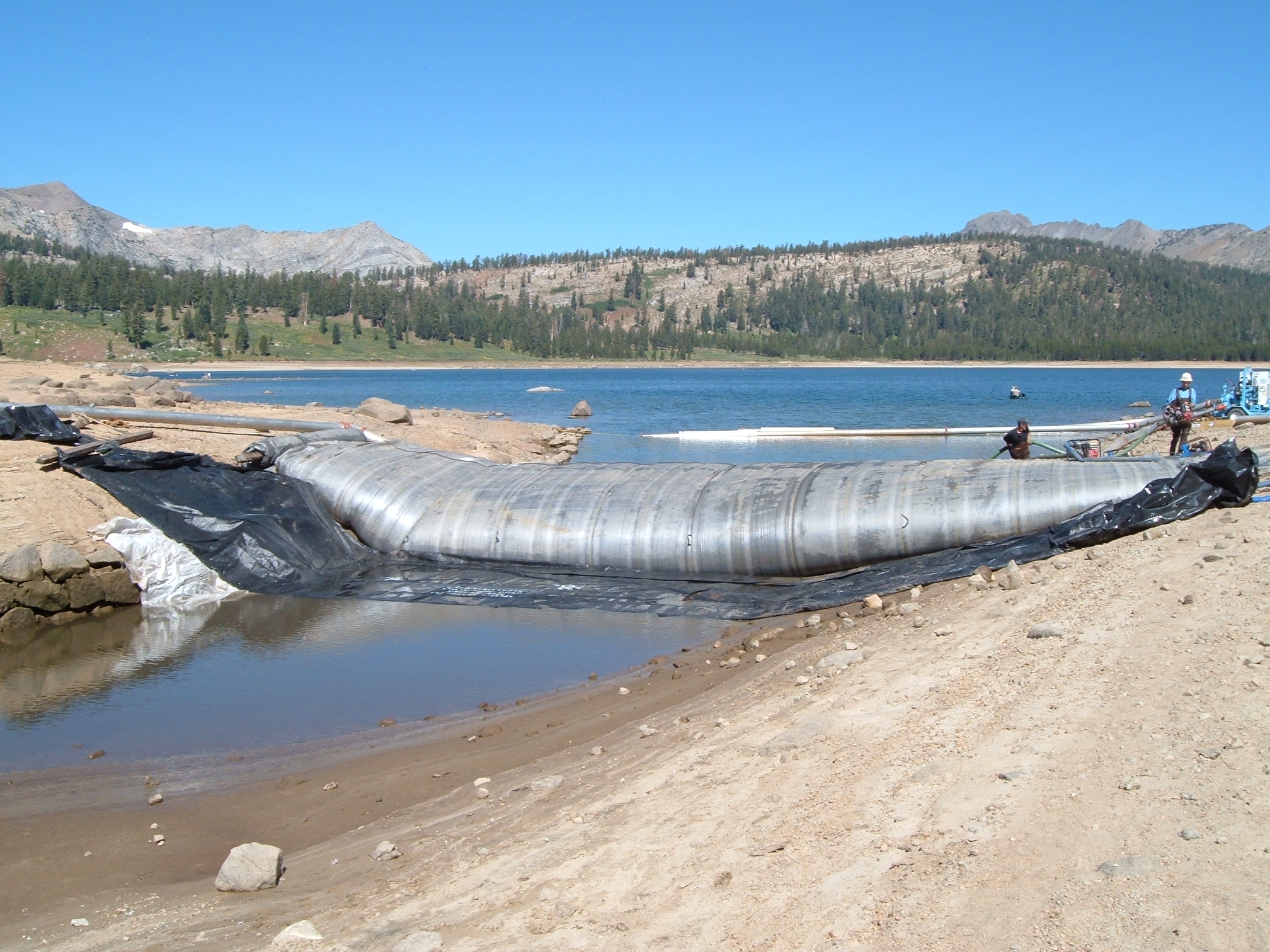
25.) Looking upstream at the two AquaDams.
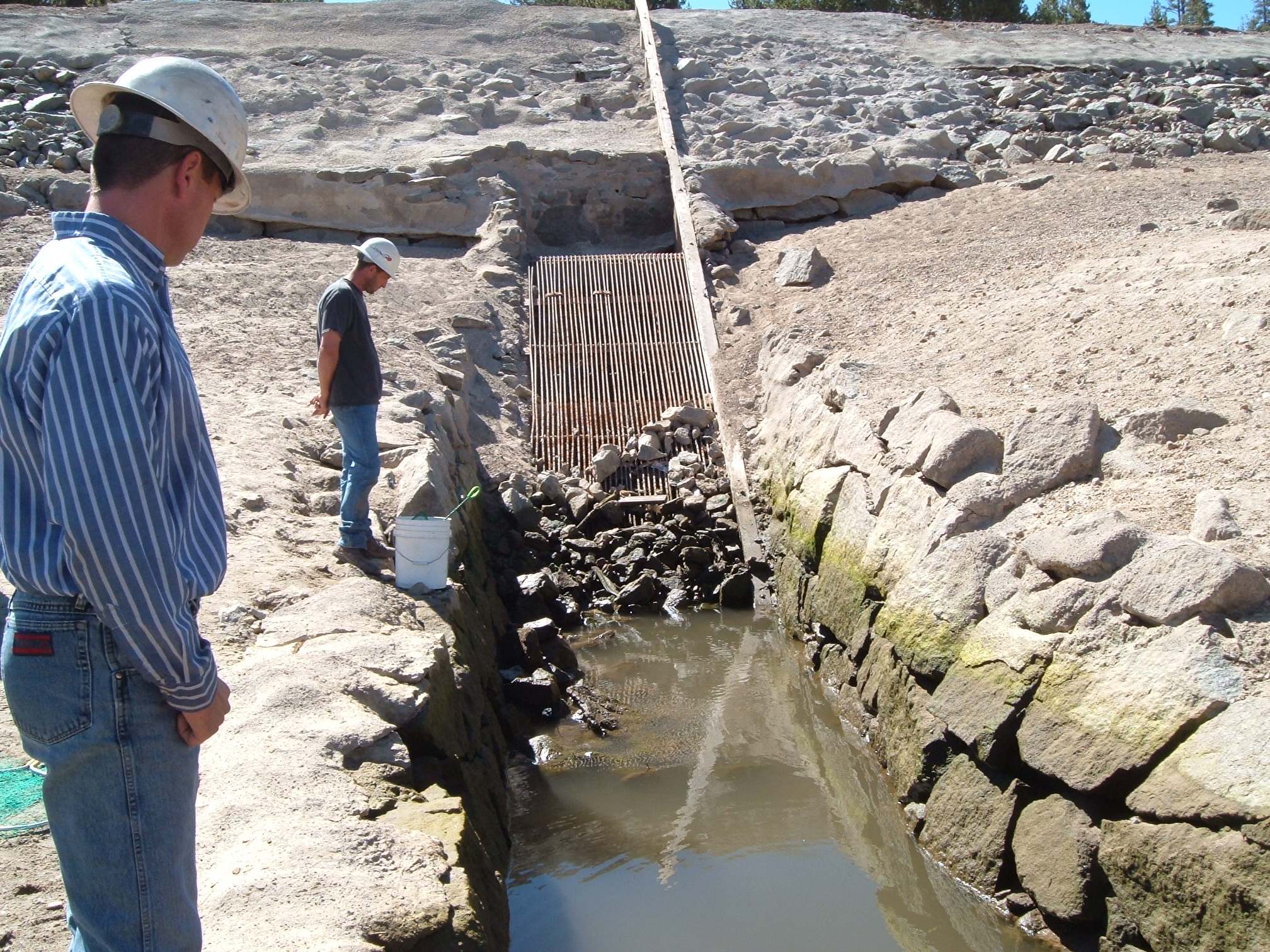
26.) The gate that needs repairs.
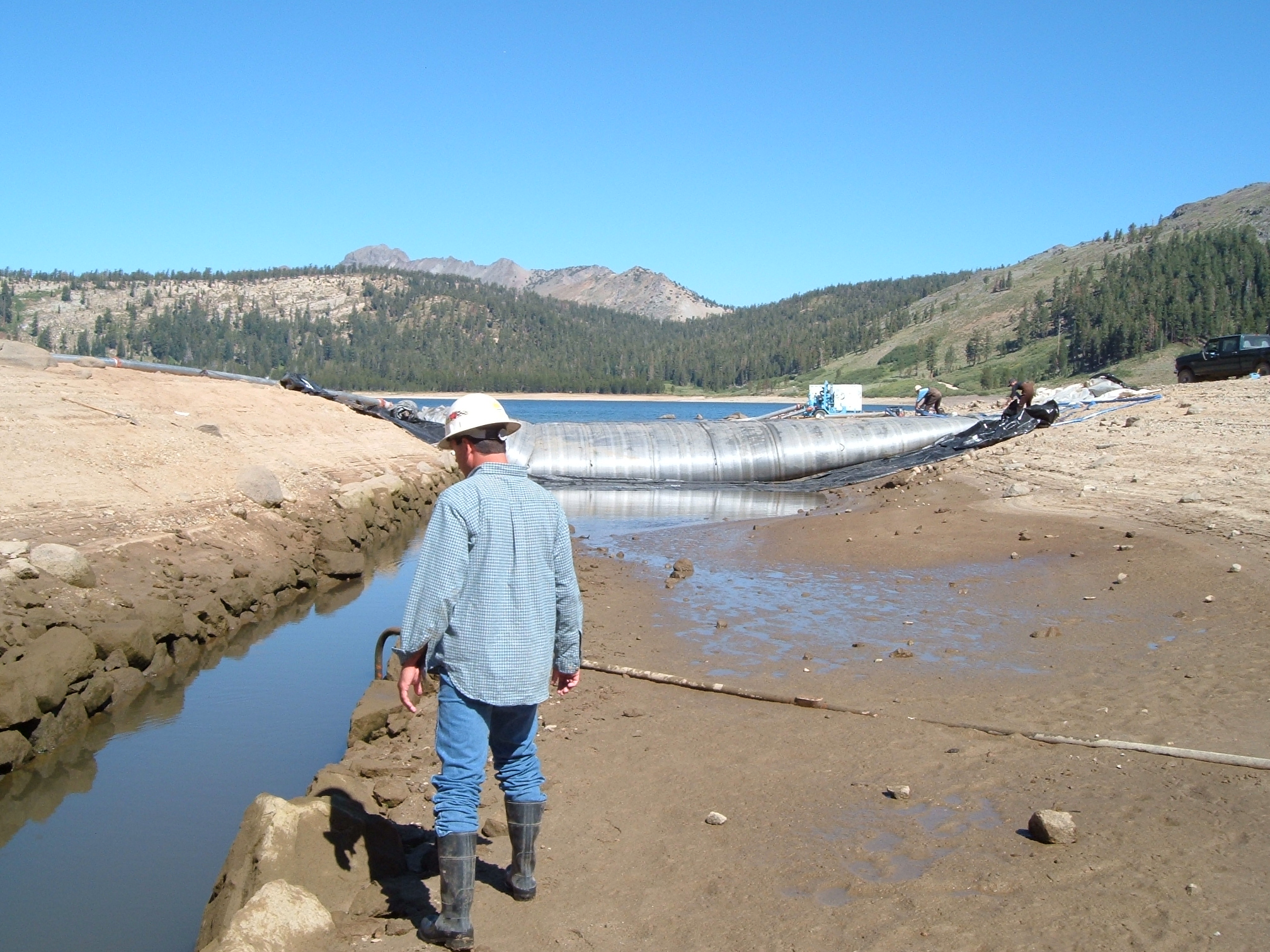
27.) Looking upstream from the gate at the two AquaDams.
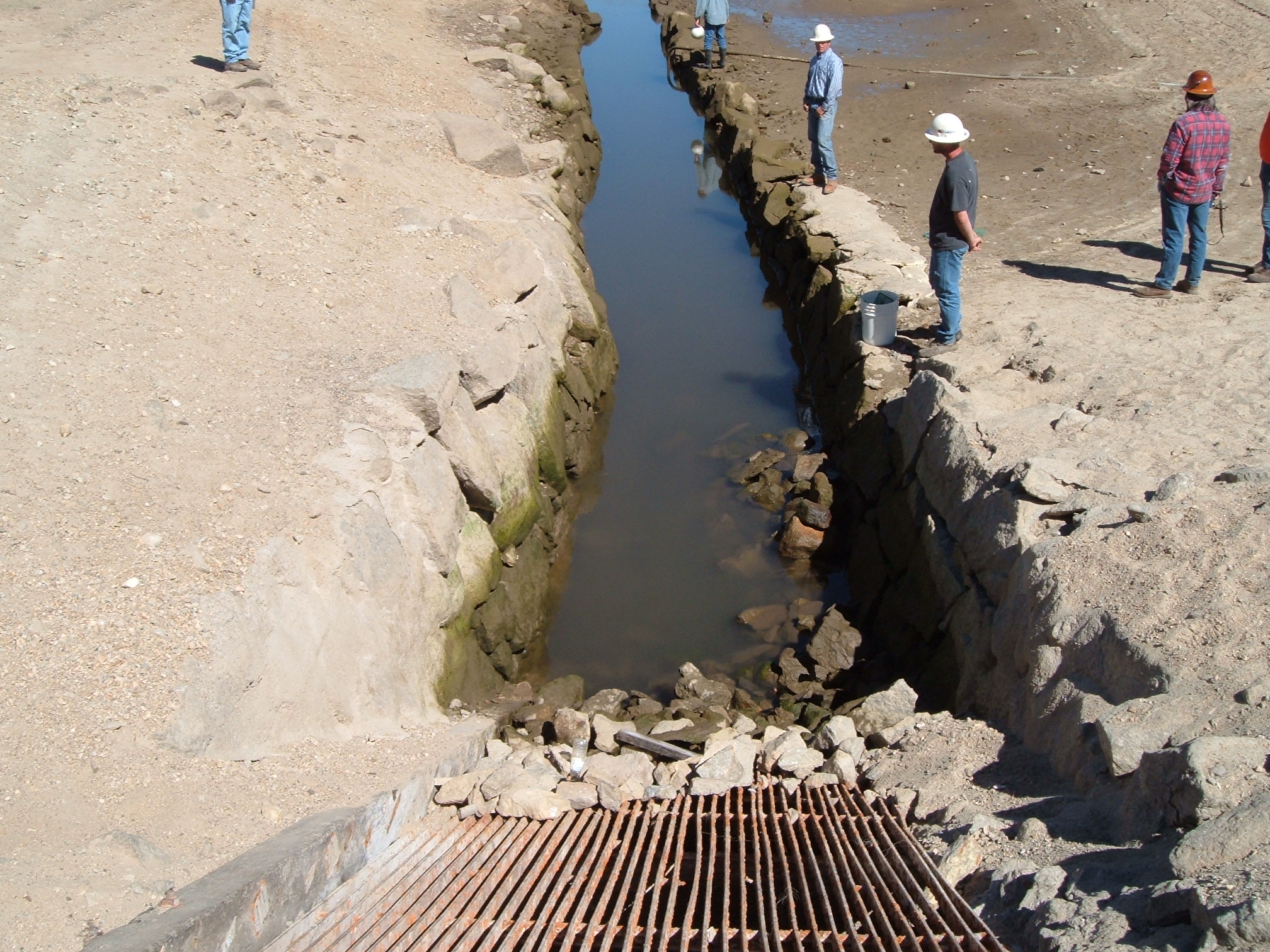
28.) Looking down at the gate that will be repaired.
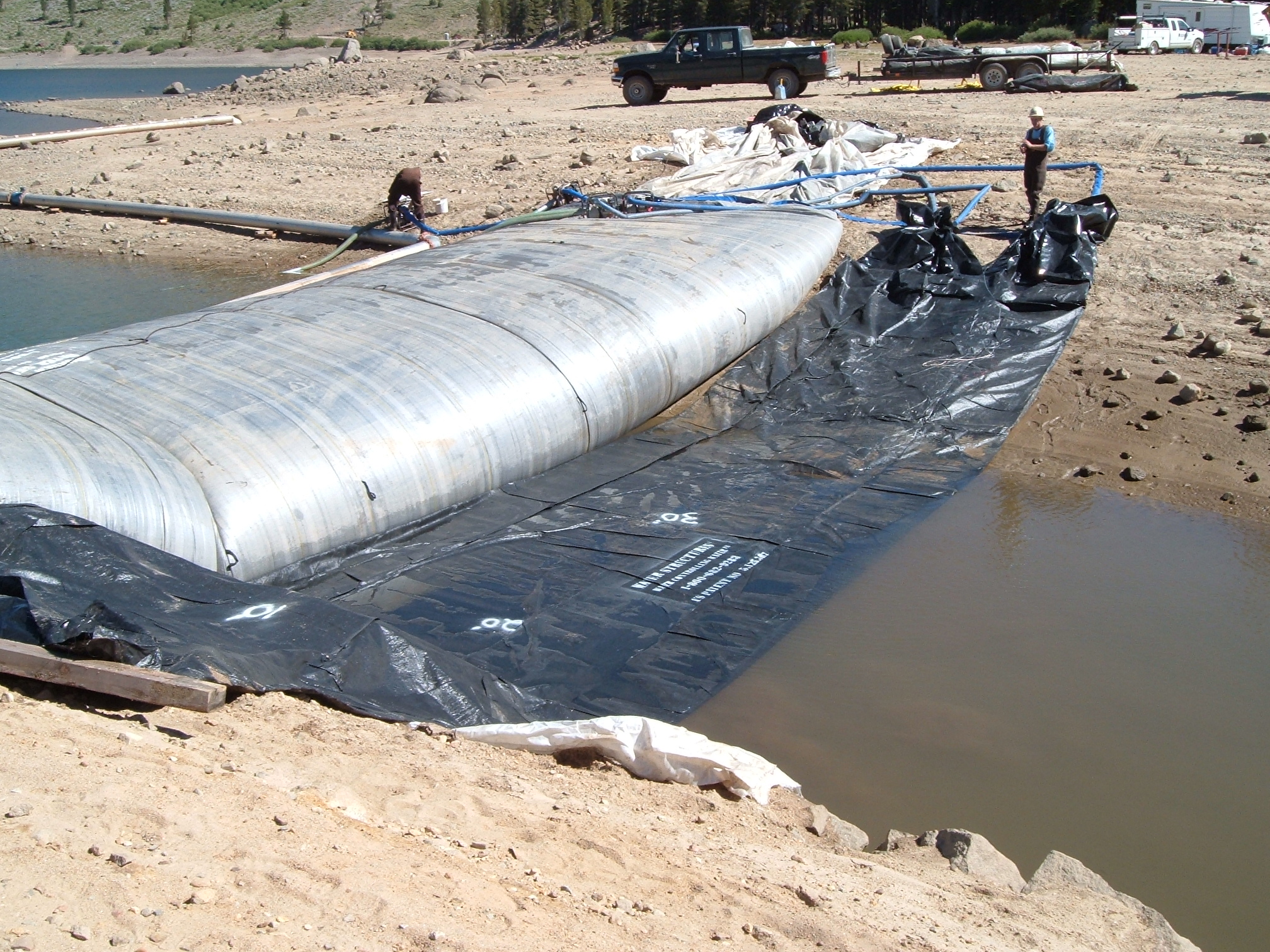
29.) The second AquaDam is filling.
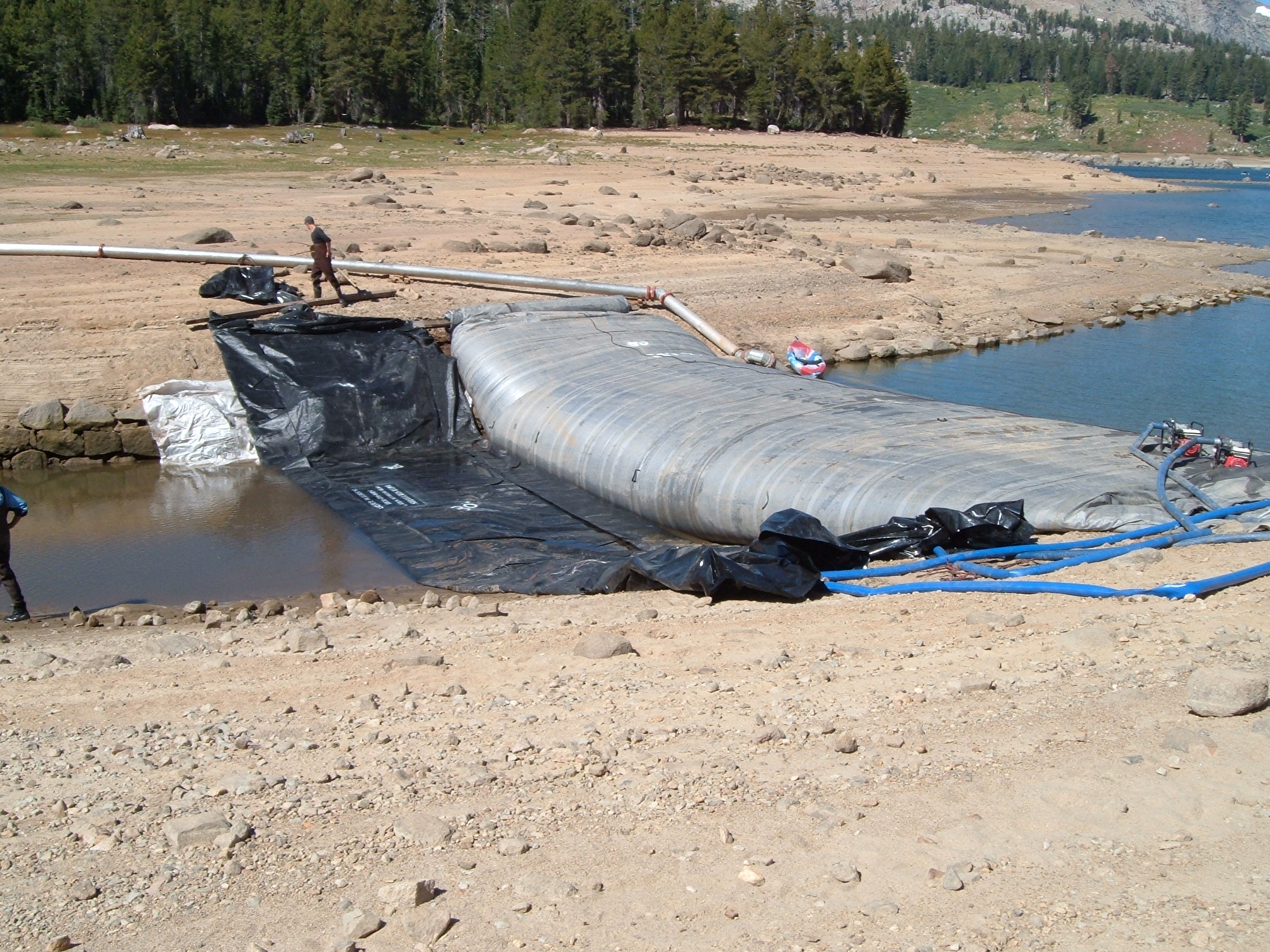
30.) The ending bank for the second AquaDam is very rocky with several gaping cracks, so workers placed dunnage material over the rocks to help.
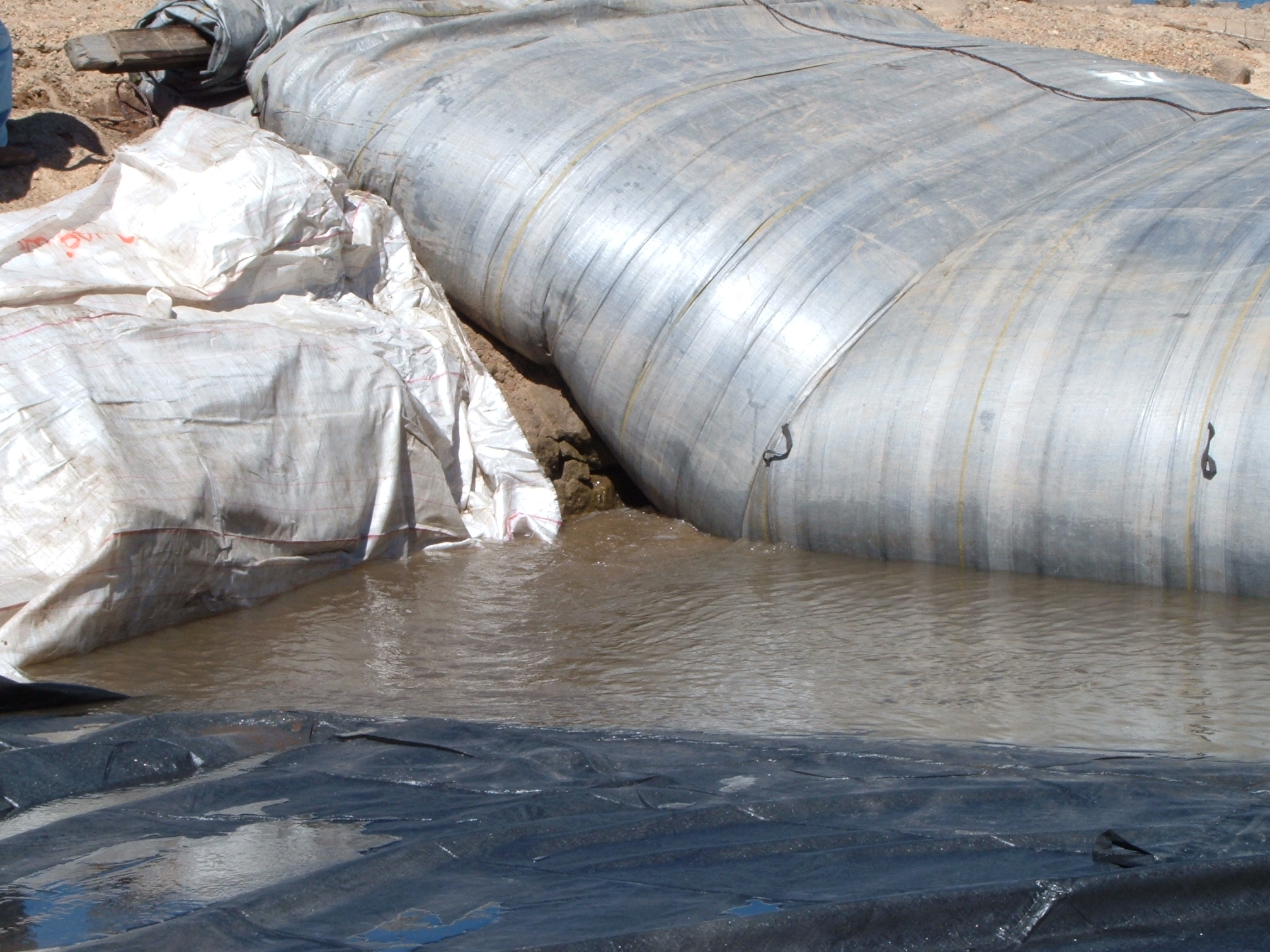
31.) Water is seeping out from behind the rocks at the ending bank of the first SCE AquaDam.

32.) Workers prepare a spot downstream of the already installed AquaDam to re-deploy the second AquaDam.
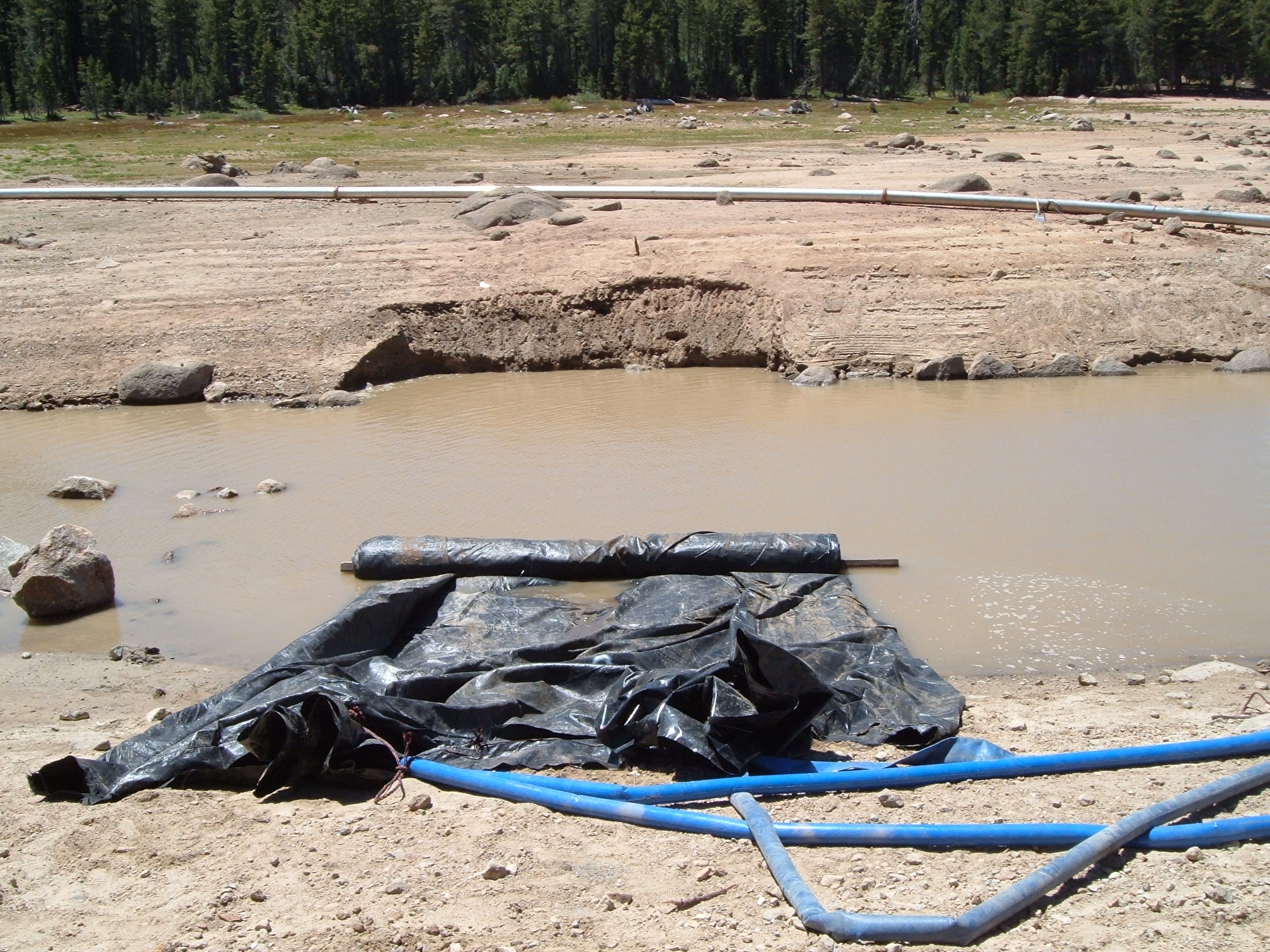
33.) The second AquaDam has been re-launched from its new starting bank.

34.) Looking upstream at the first SCE AquaDam installed and the second unit being filled.
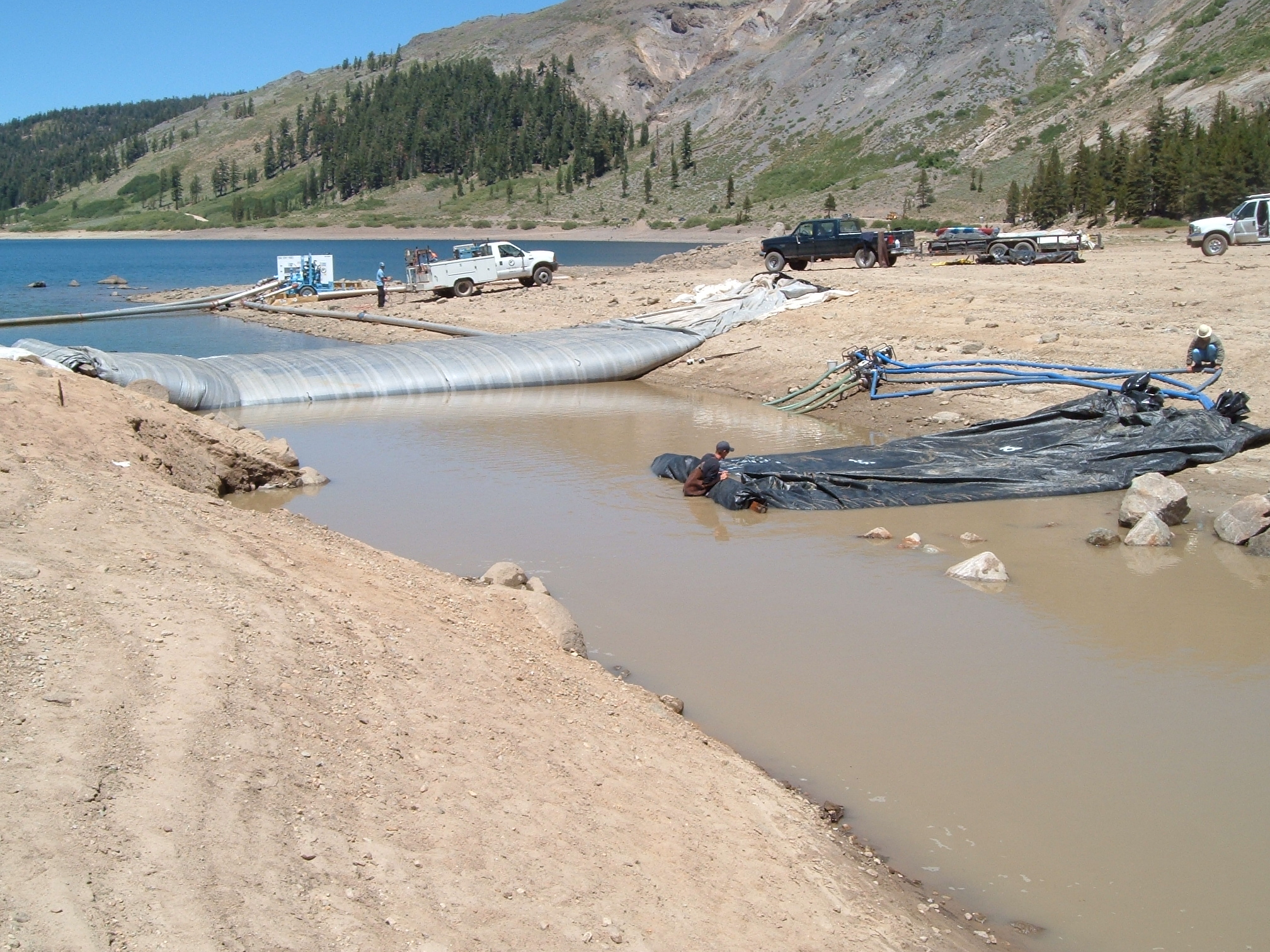
35.) A worker holds the roll end while the second AquaDam continues to fill.
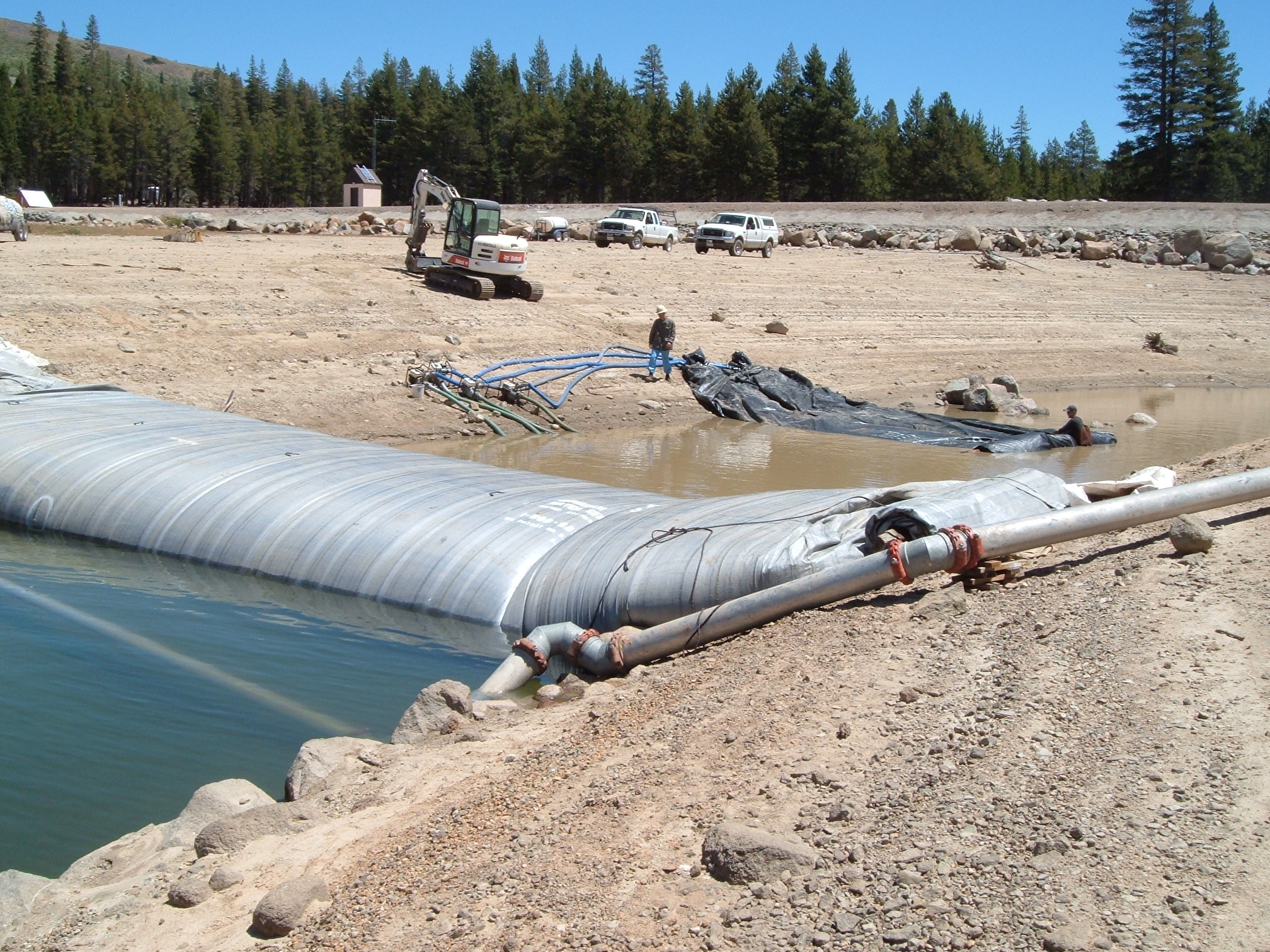
36.) Looking downstream at the two AquaDams. The second dam continues to be filled using four 3-inch water pumps.

37.) The second AquaDam has made it to its ending bank. The second AquaDam was a double open end (DOE) unit. Notice the taped-up fill-tubes at the ending bank?
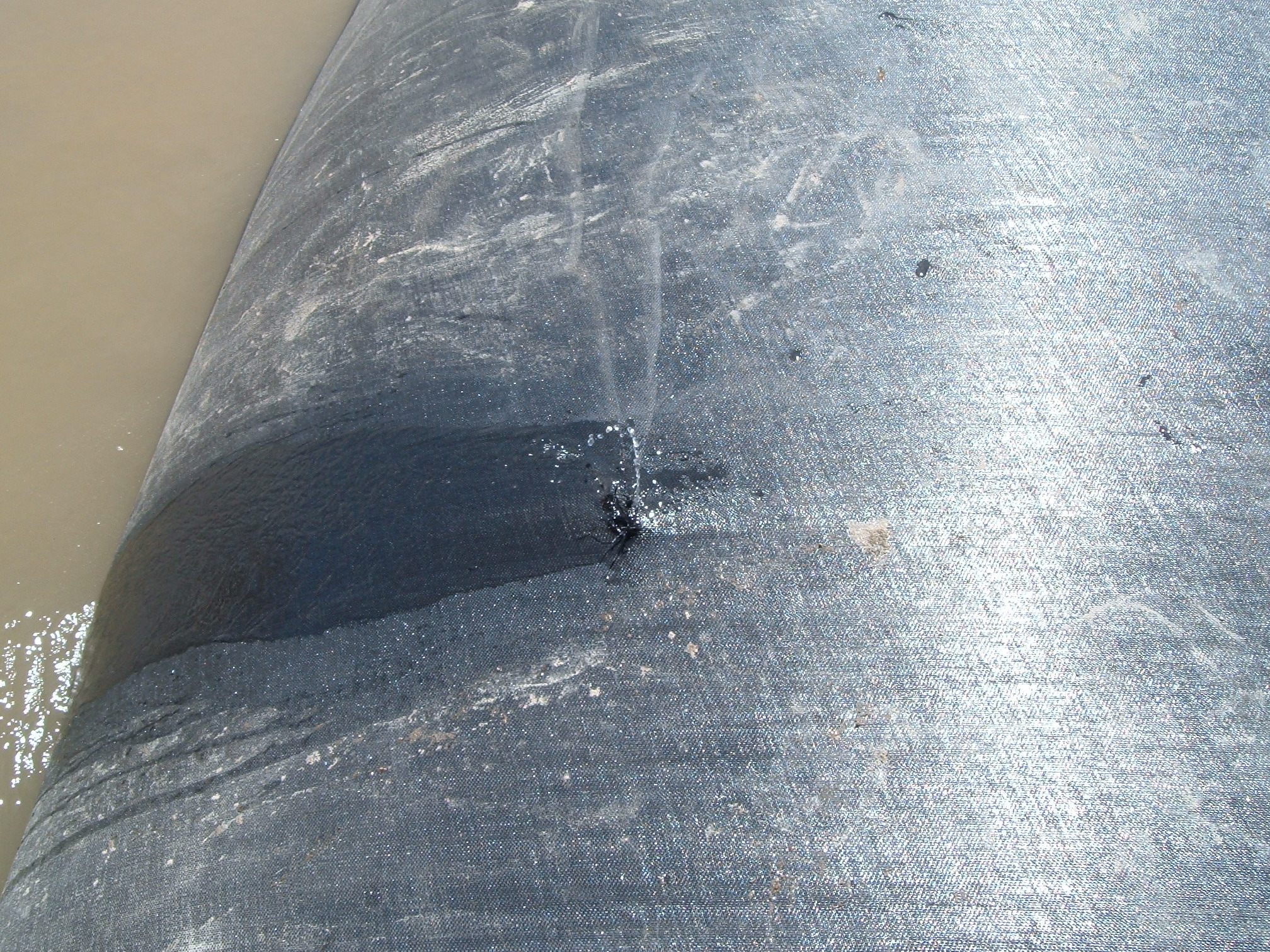
38.) A small hole in the second AquaDam. Small holes can be easily mitigated by maintenance pumping or with a patch.
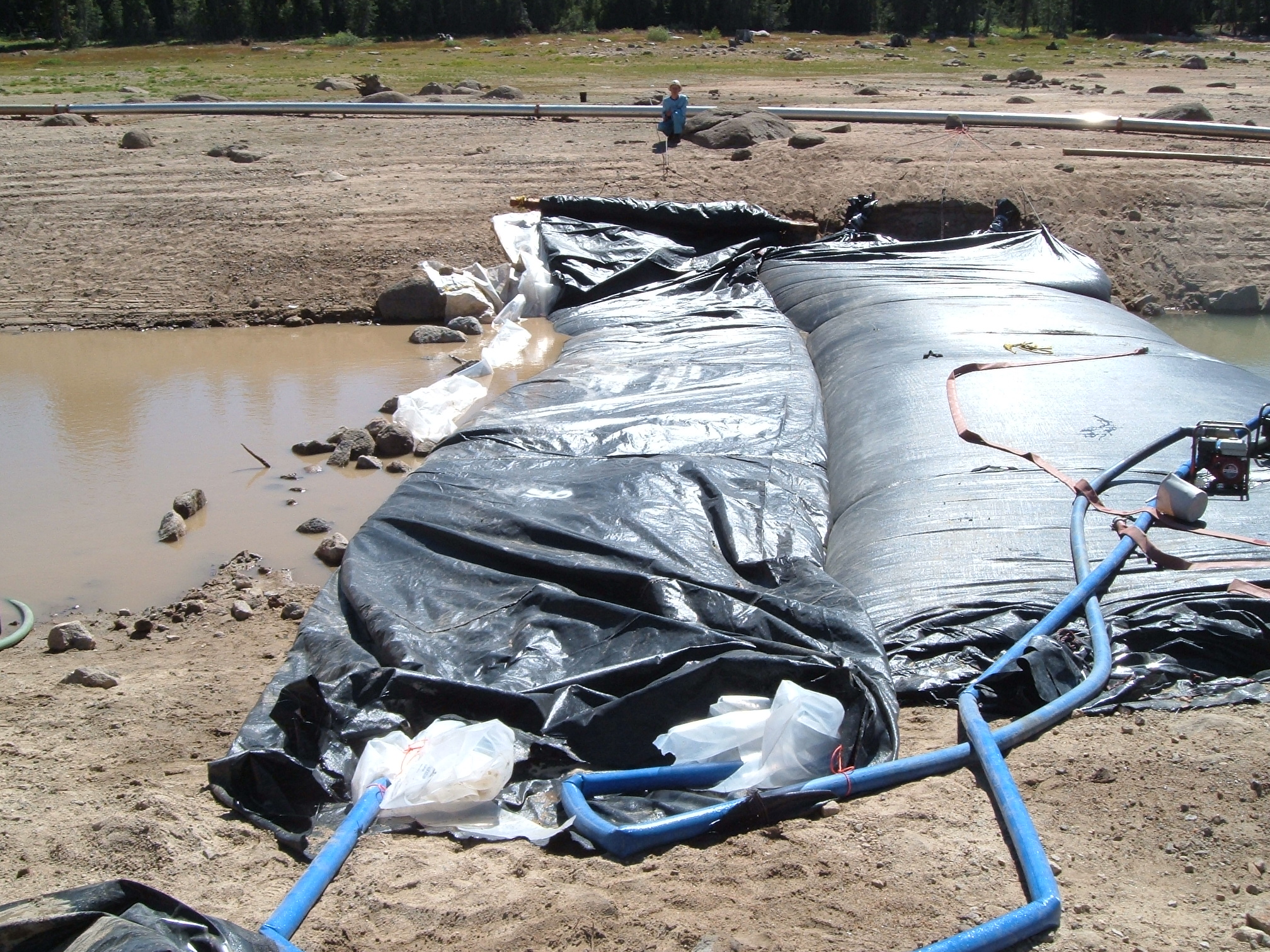
39.) A third AquaDam was installed just downstream of the second AquaDam.
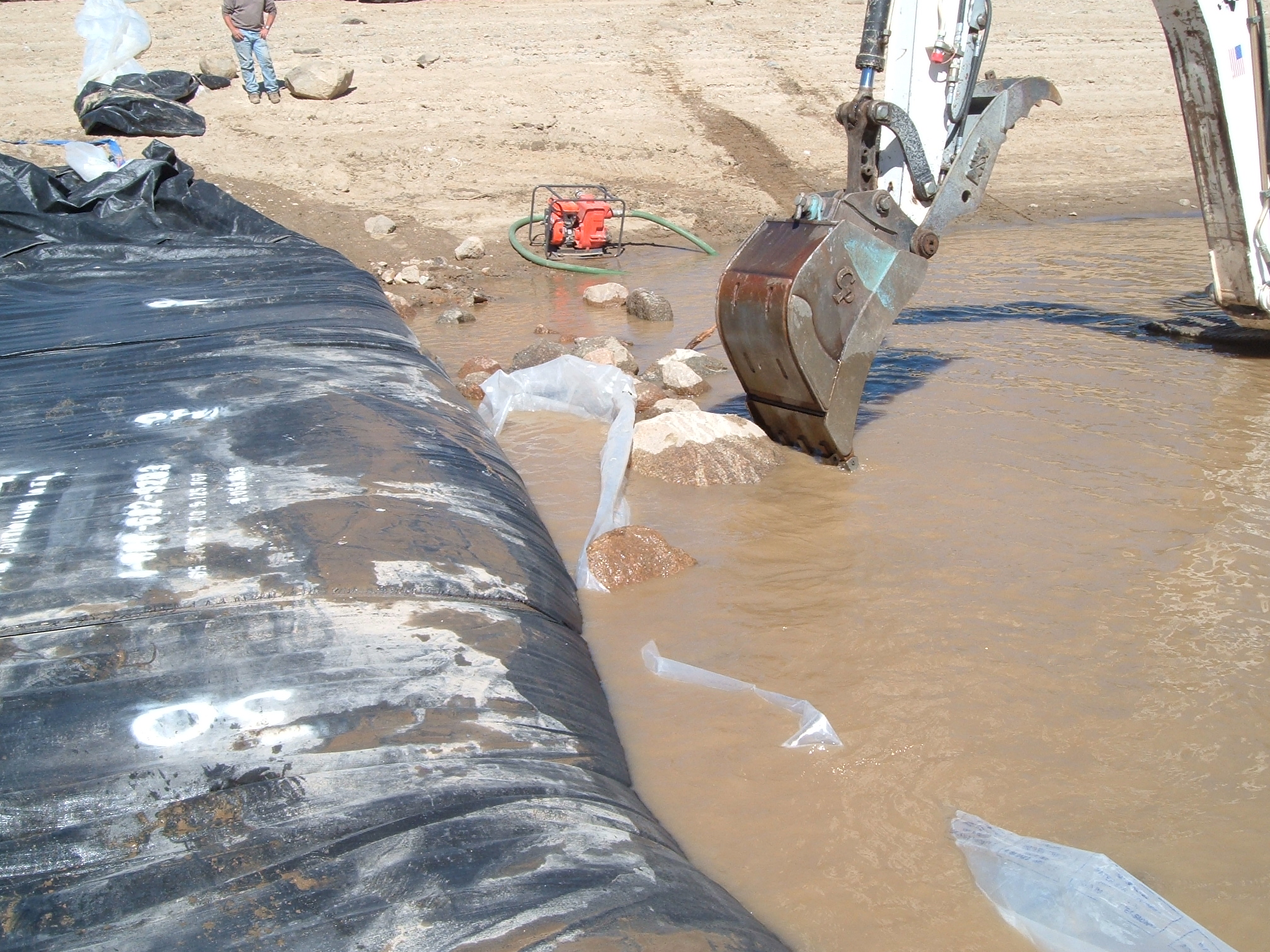
40.) Rocks were pushed up against the third AquaDam on the downstream side to help prevent the unit from rolling.
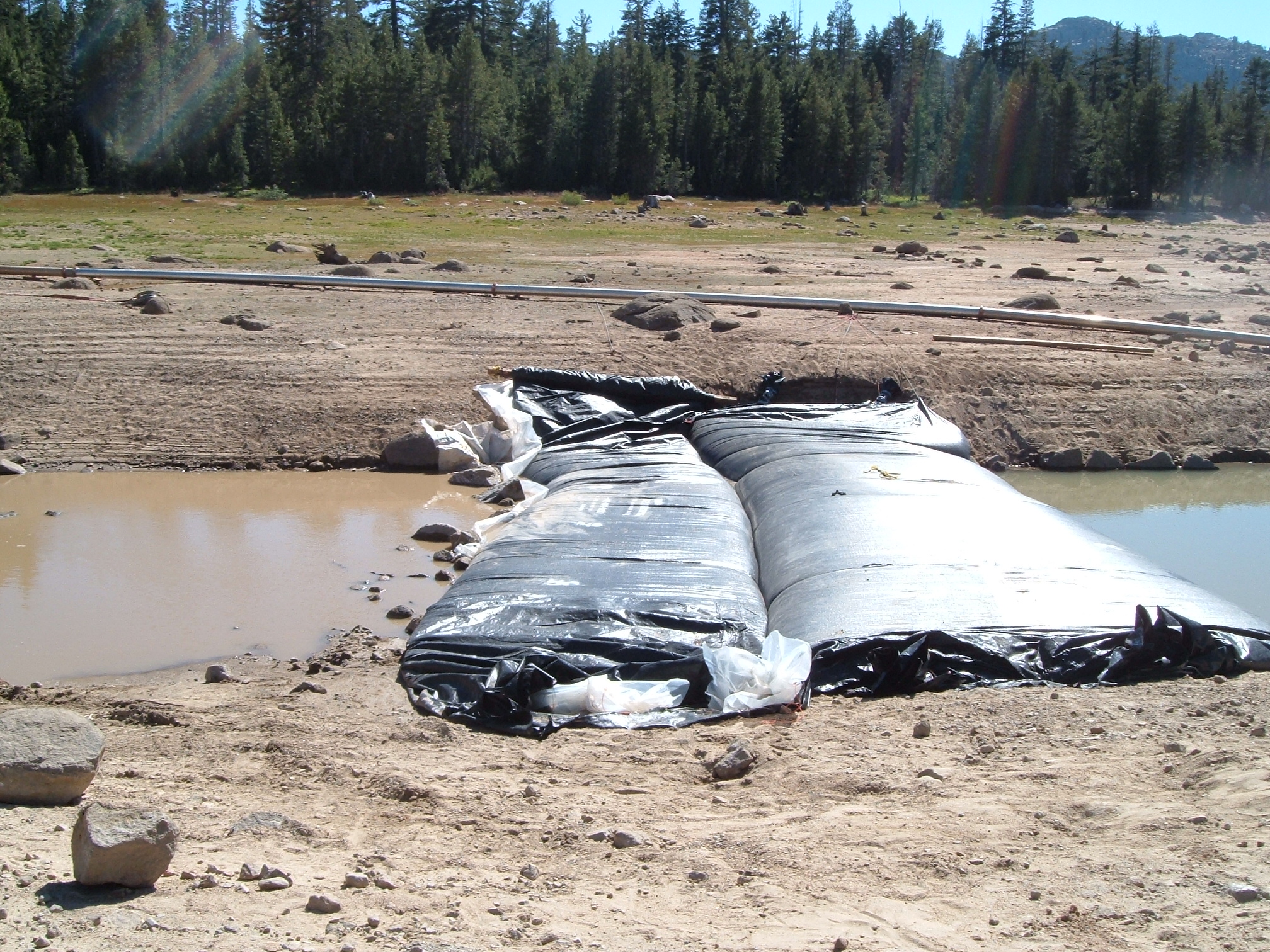
41.) The second and third AquaDams installed and full doing a great job.
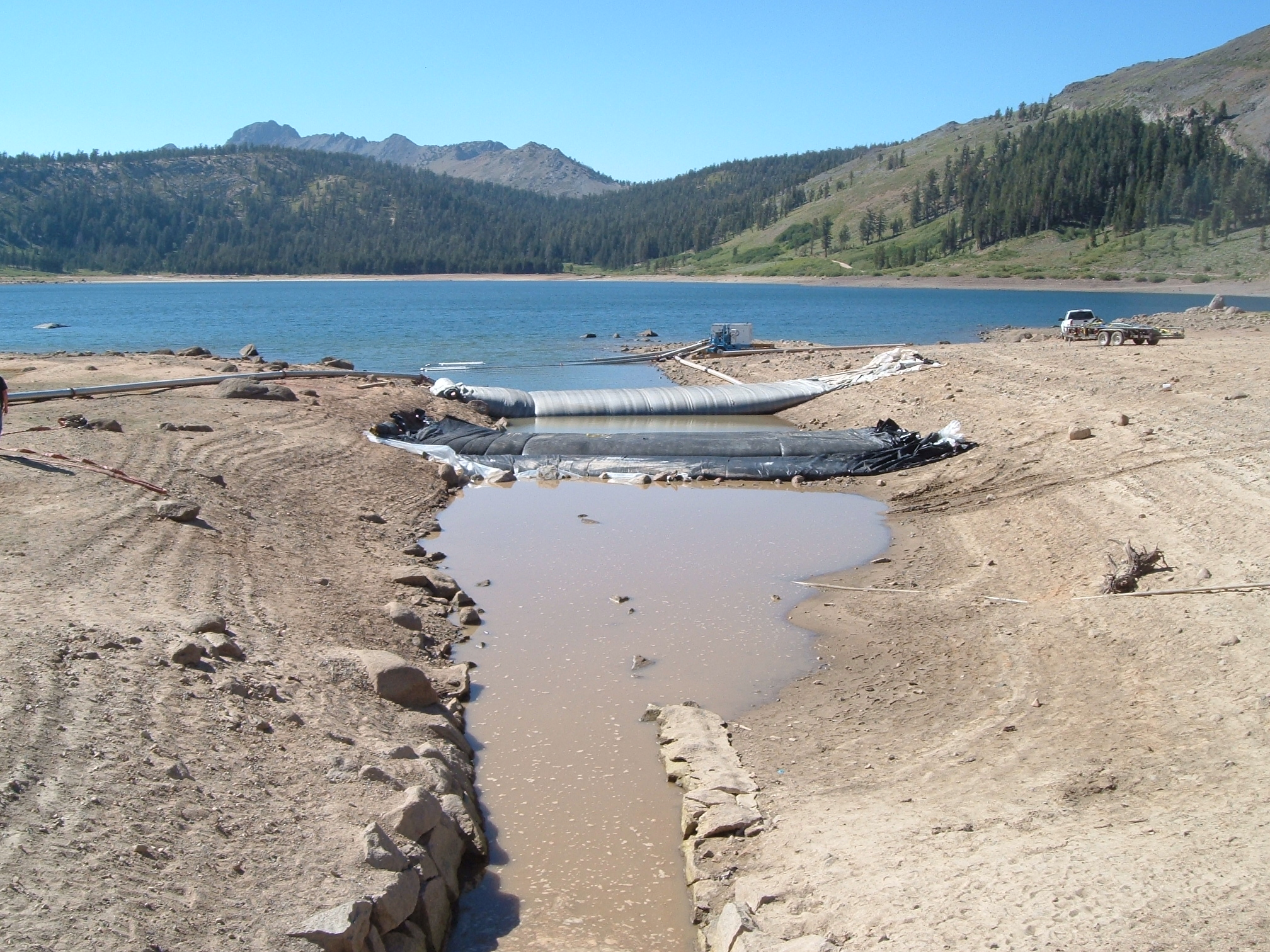
42.) Great job AquaDam!
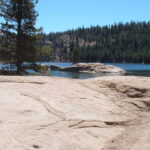
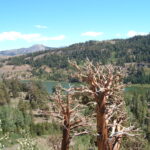
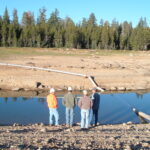
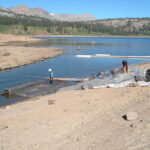
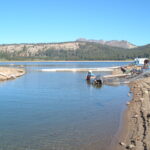
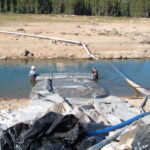
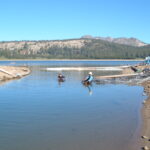
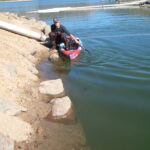
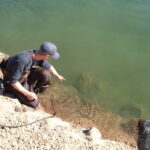
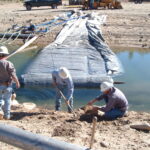
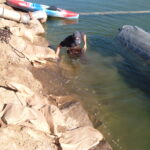
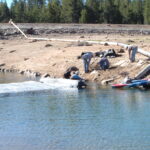
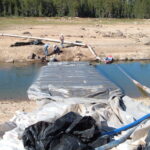
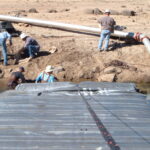
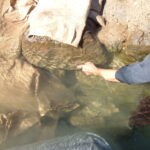
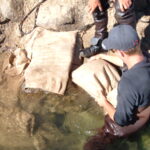
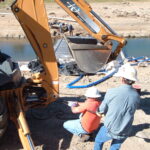
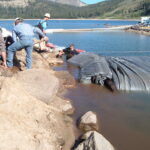
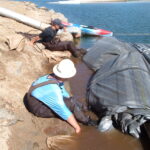
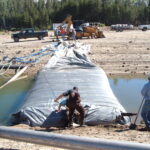
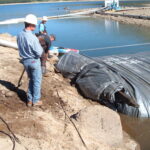
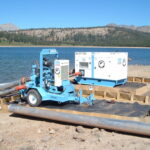

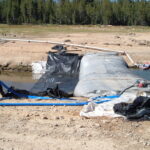
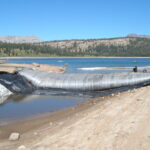
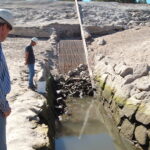
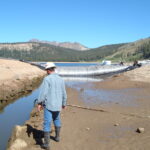
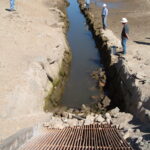
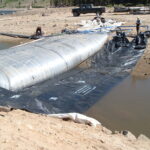
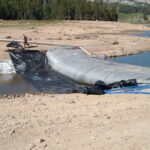
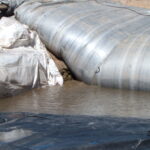
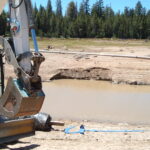
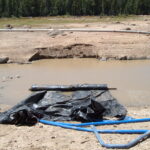
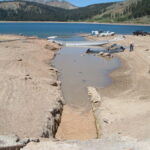
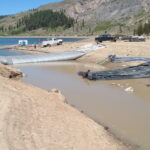

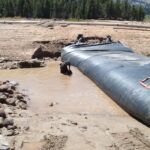
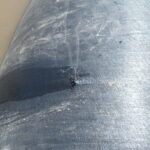
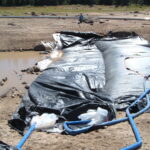
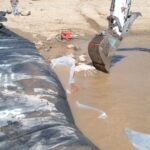
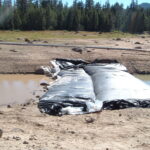
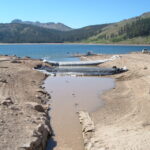
Three AquaDams, Upper Blue Lake, Gate Repair, Pump Around Diversion, PG&E
